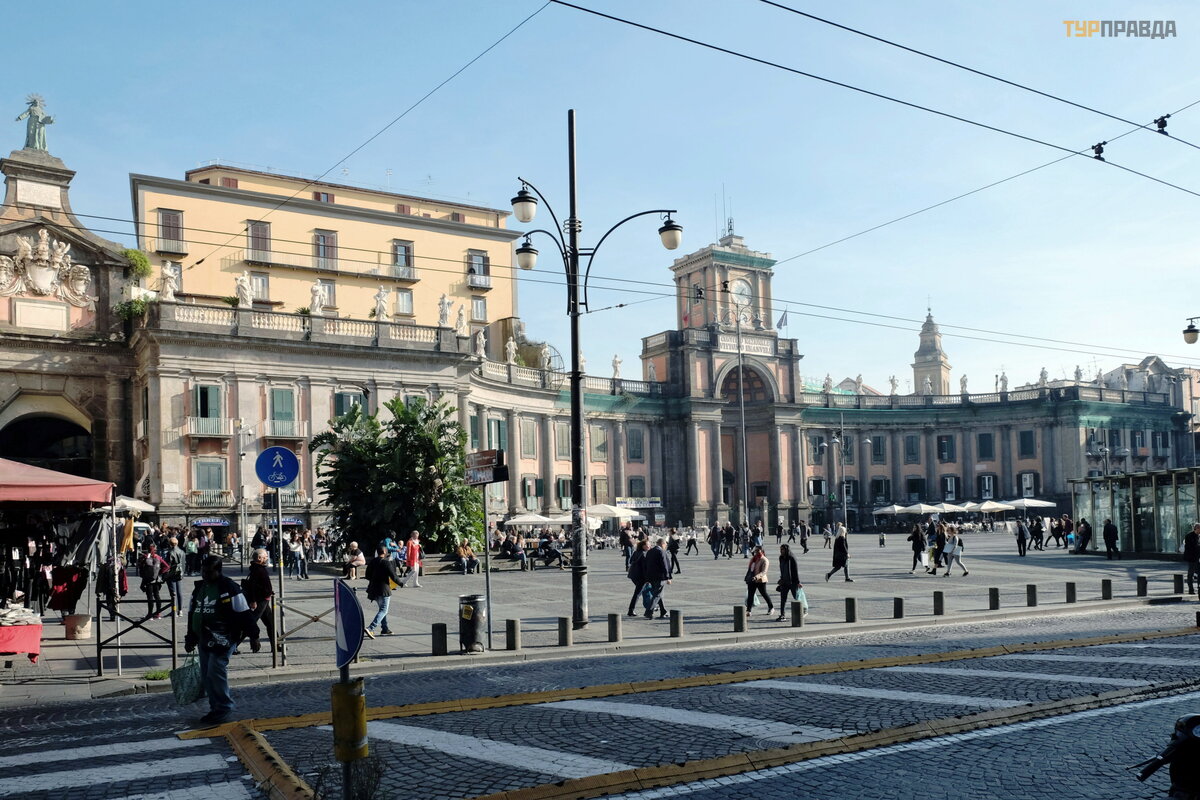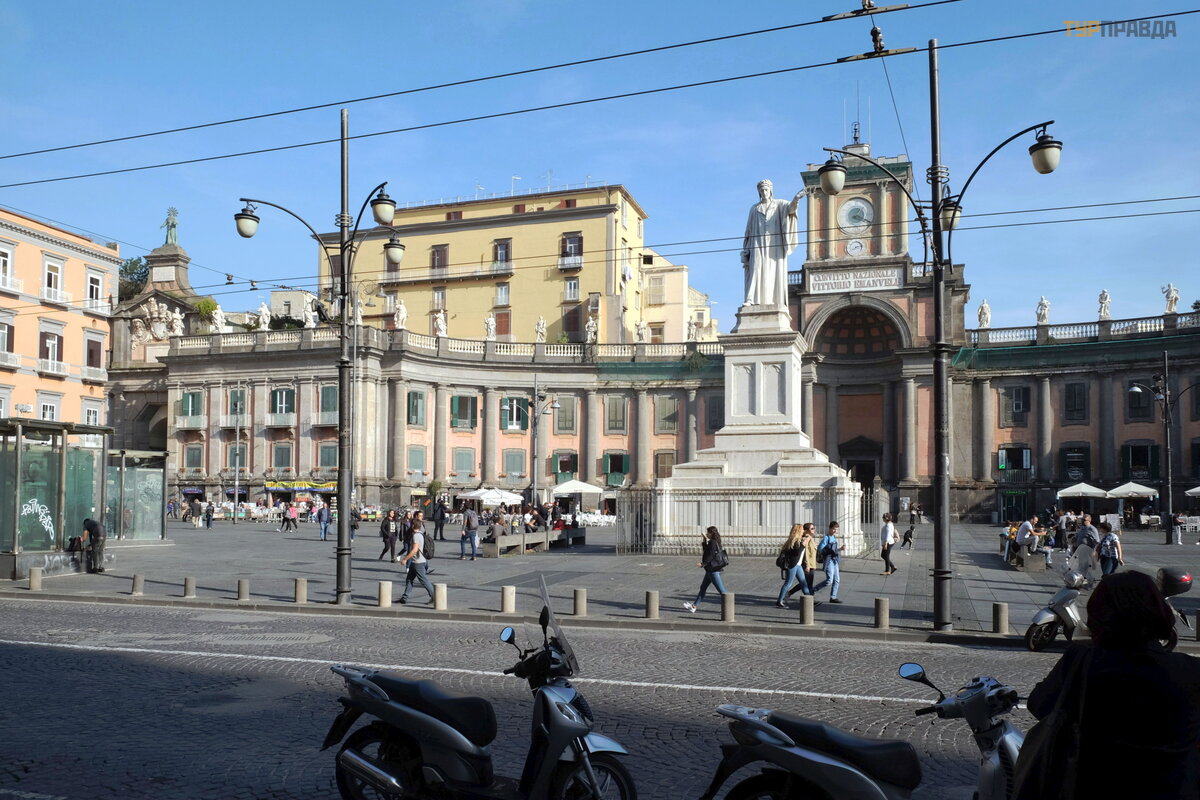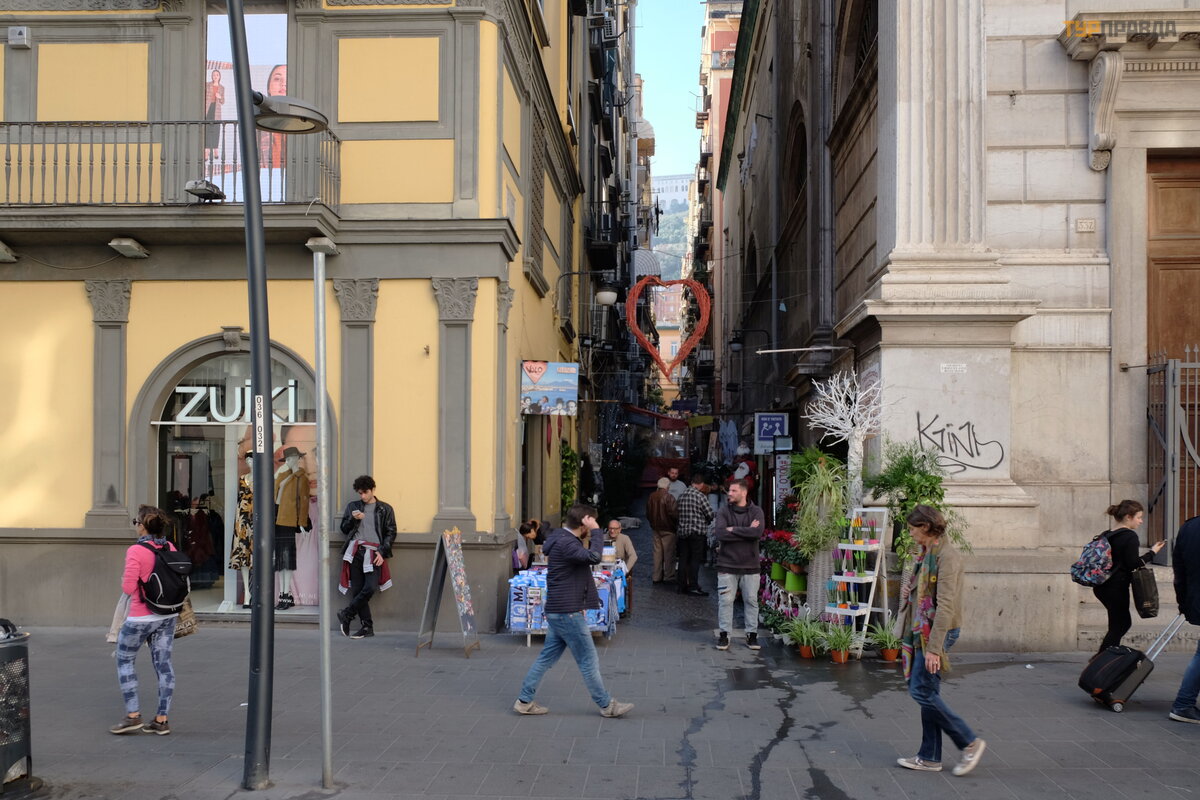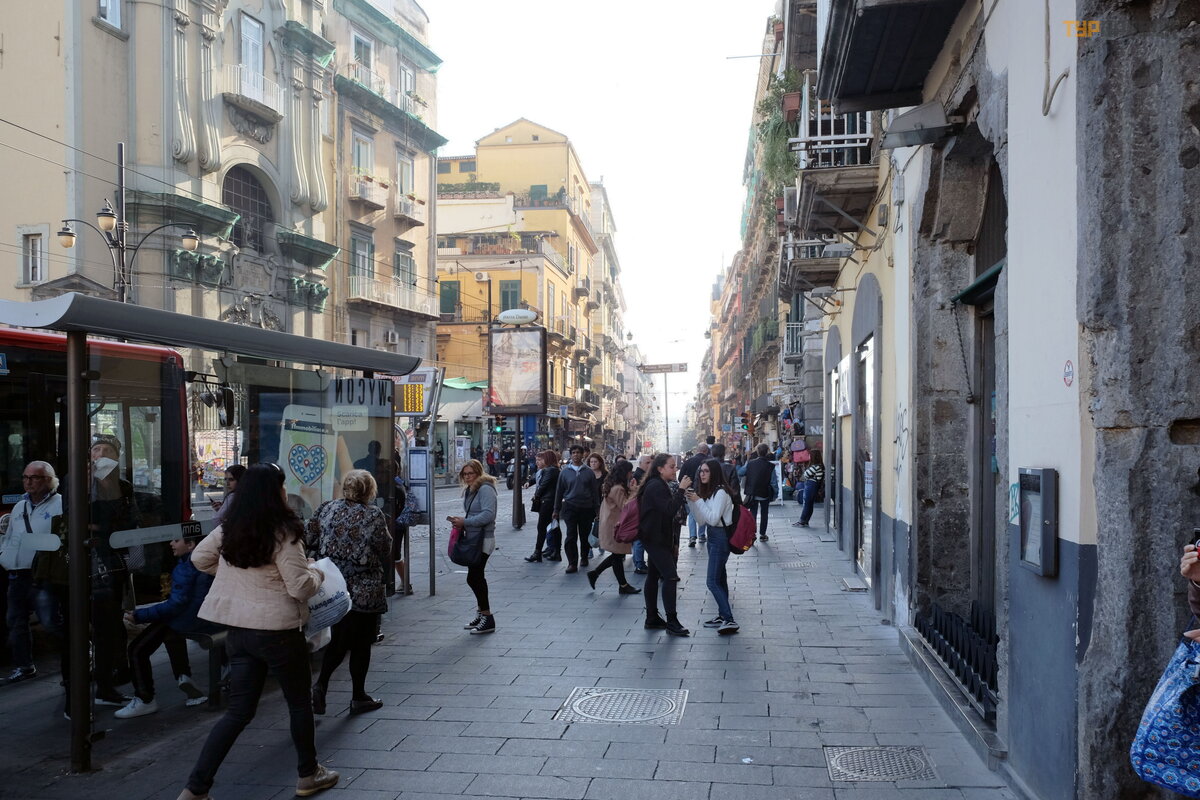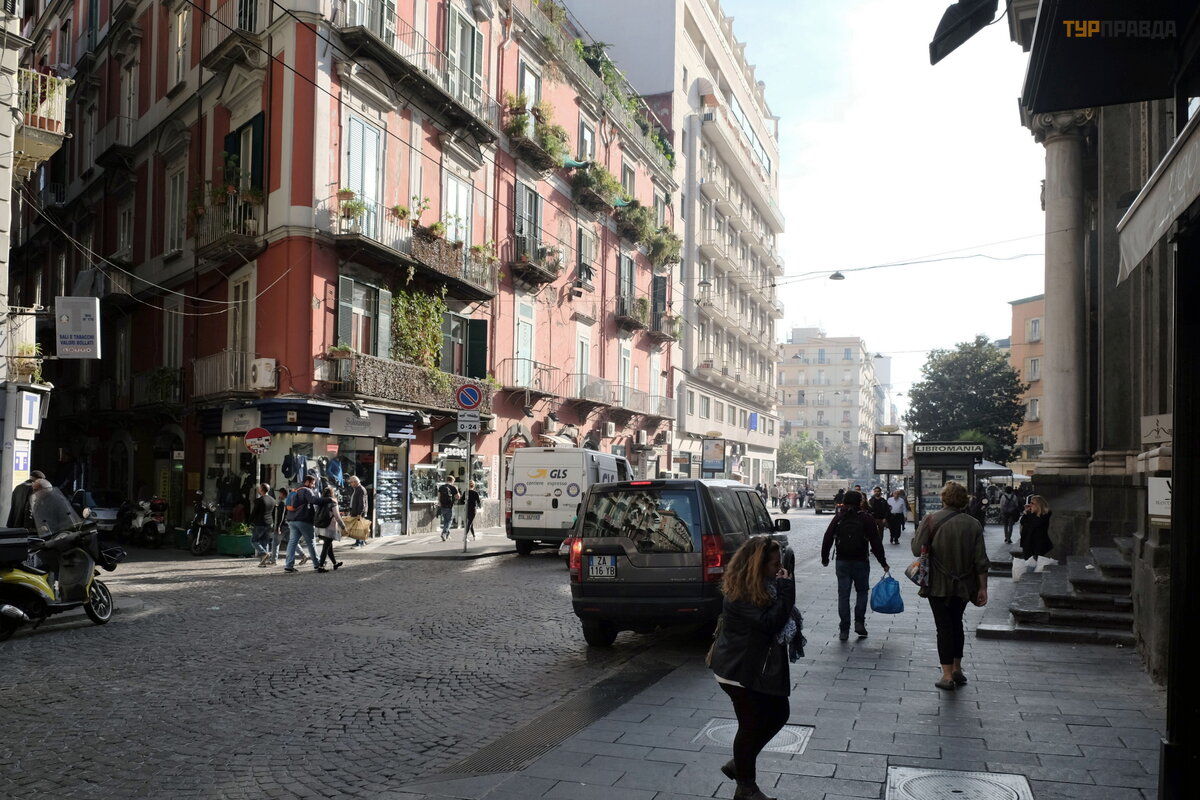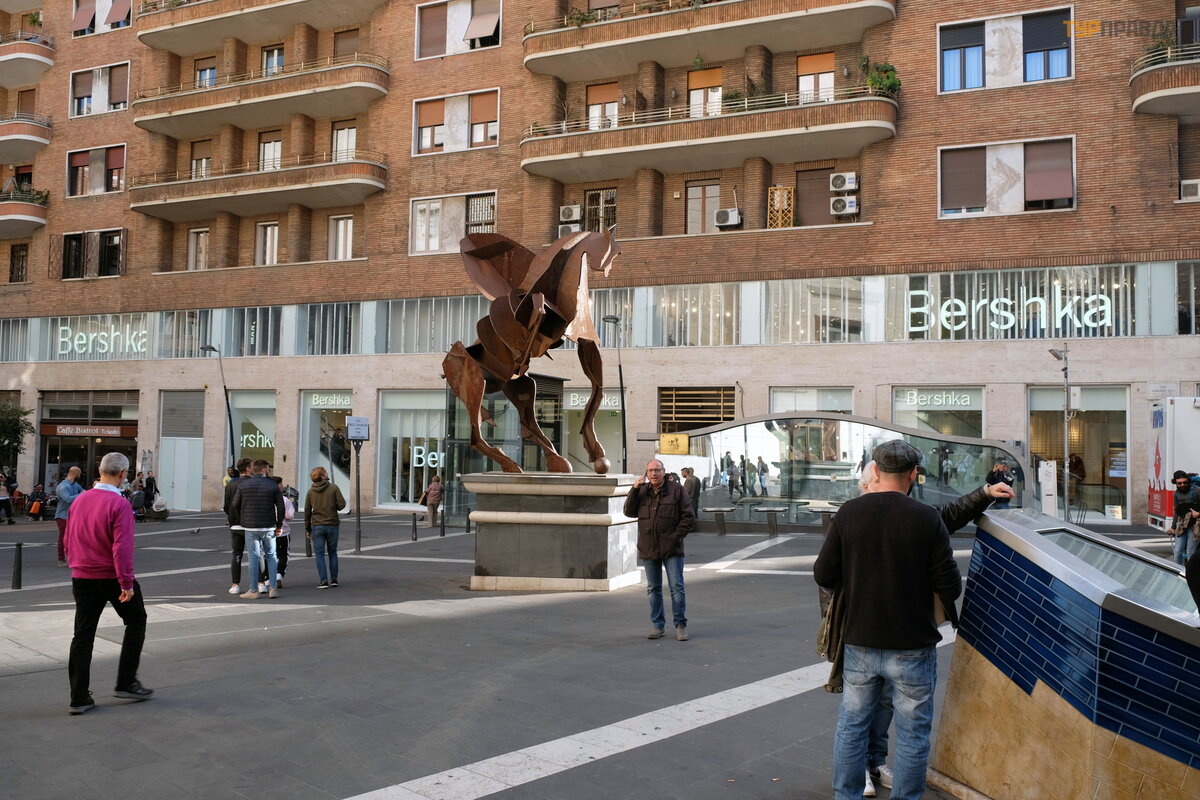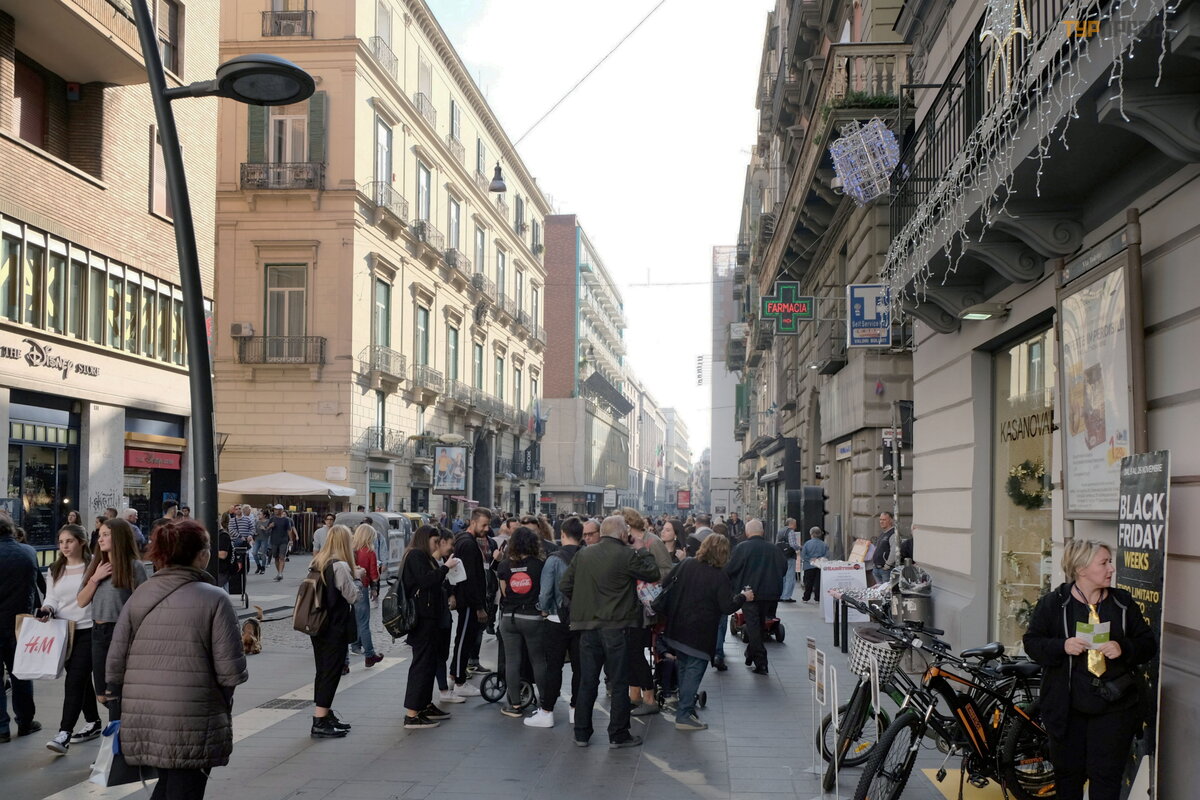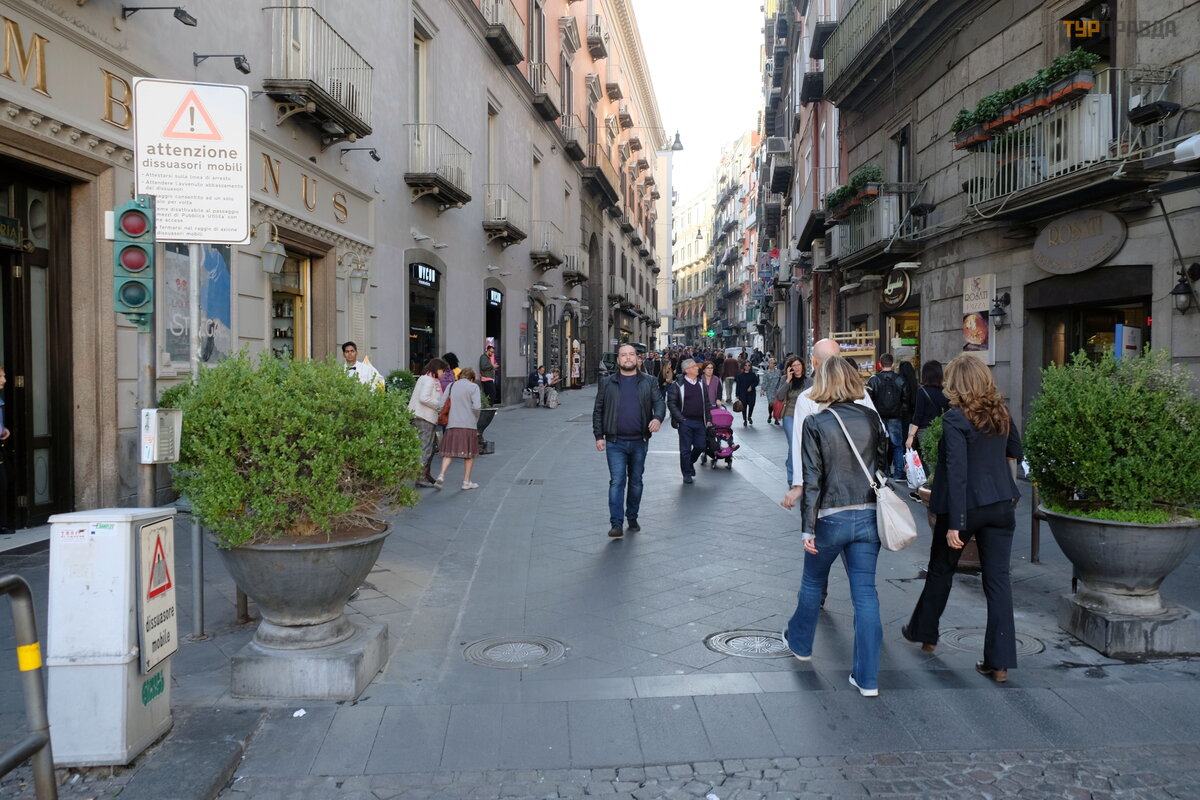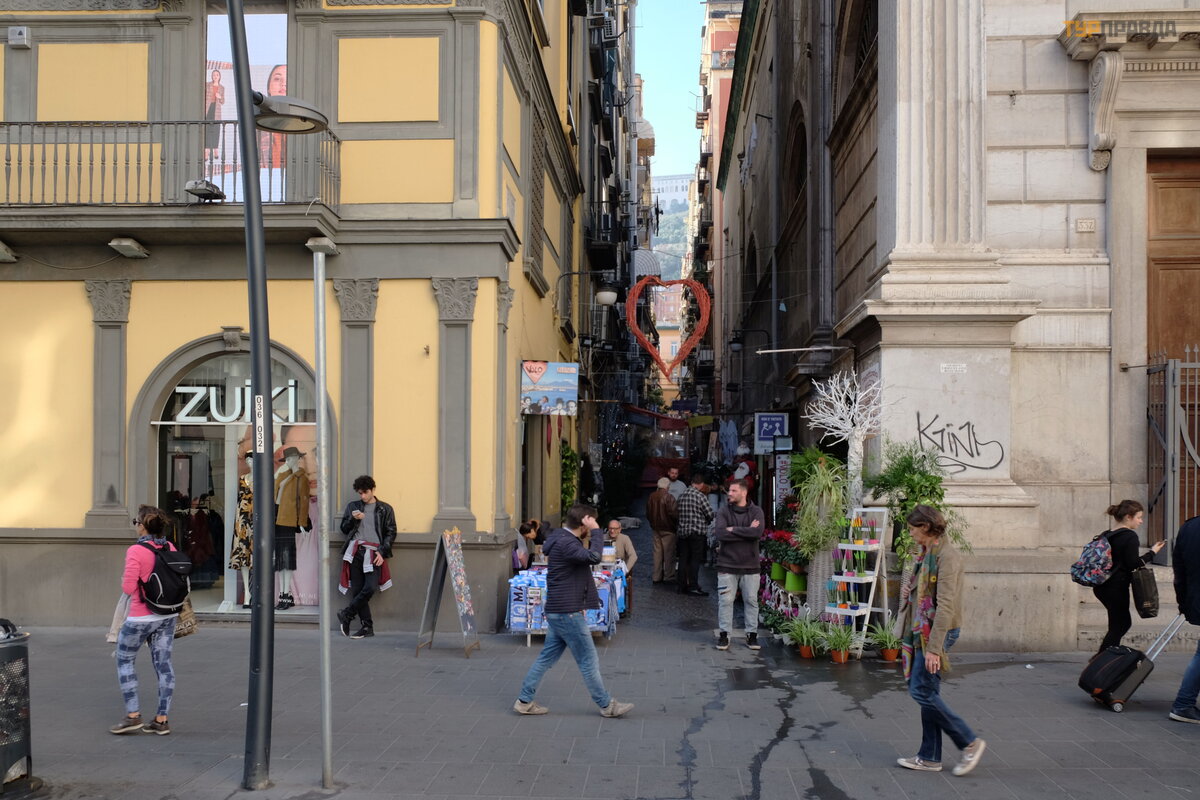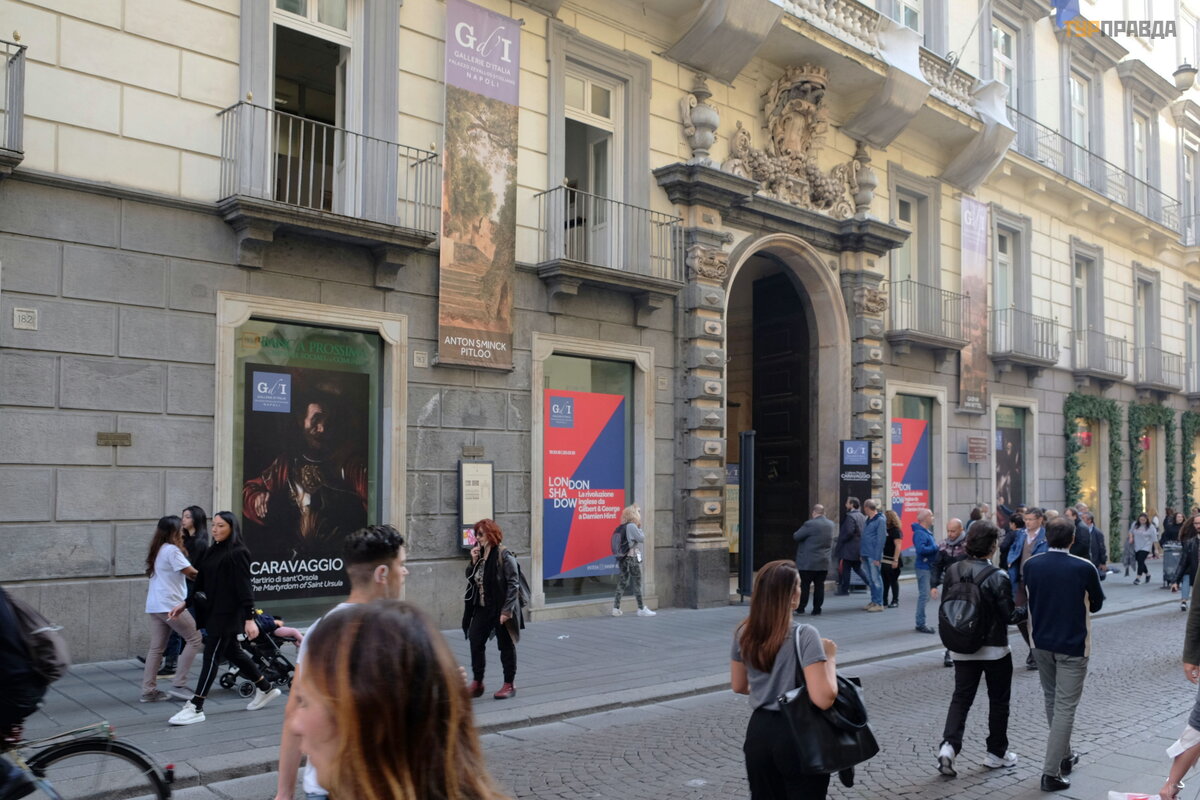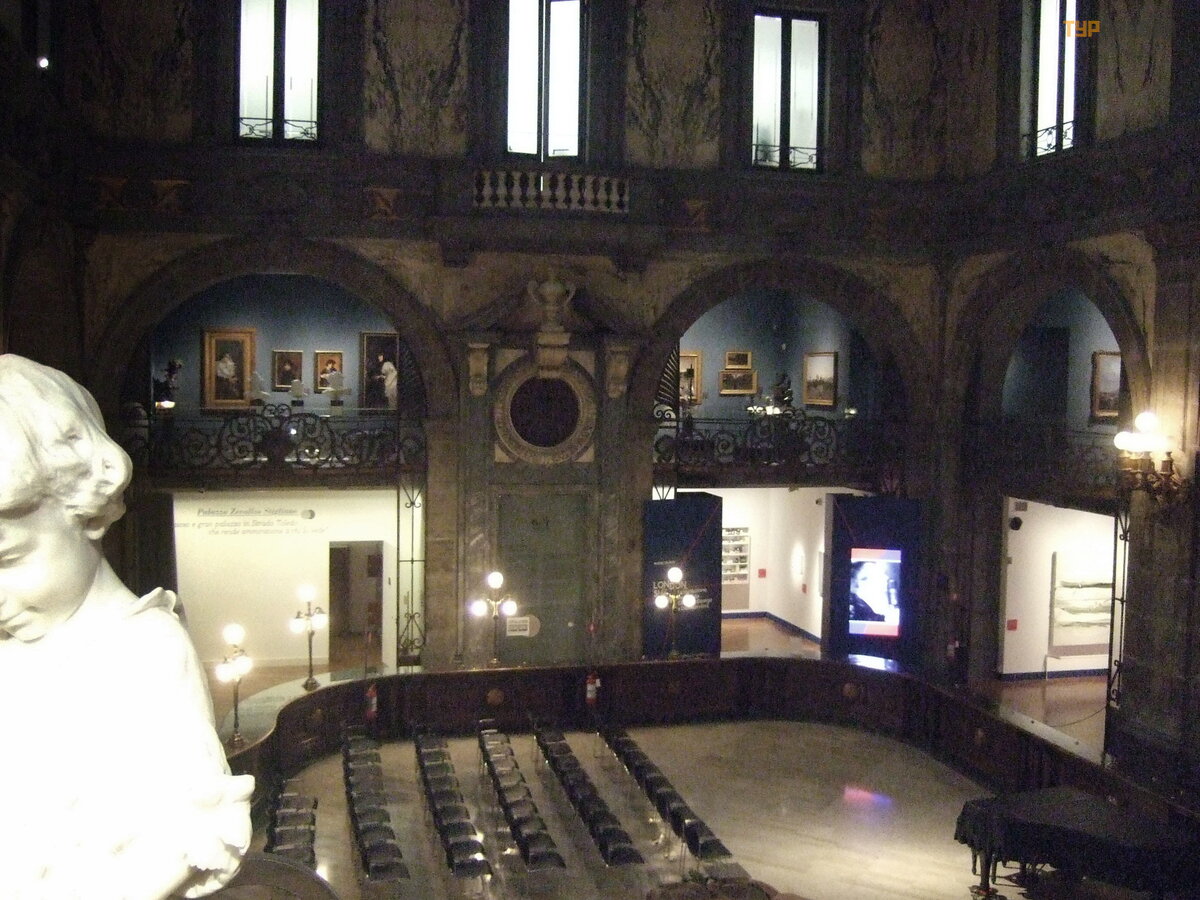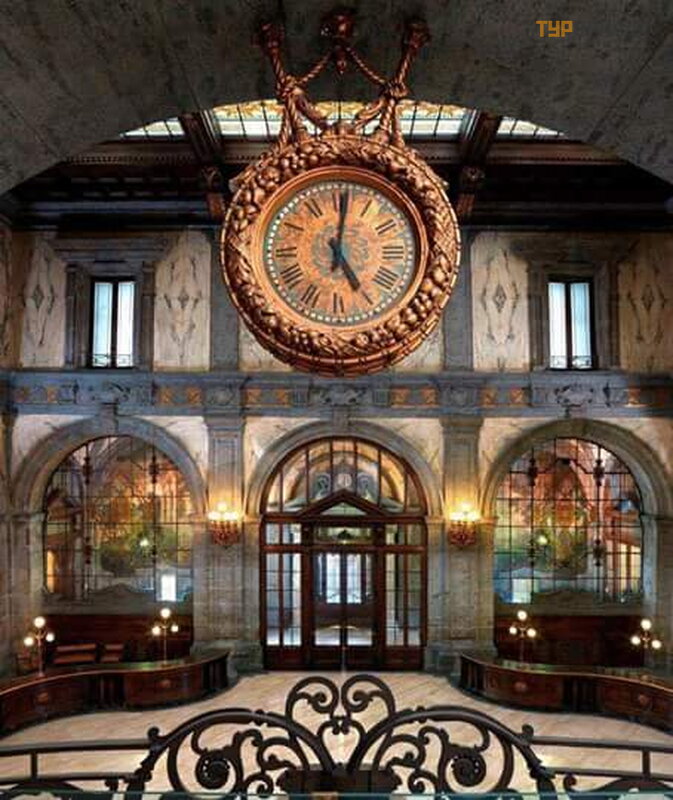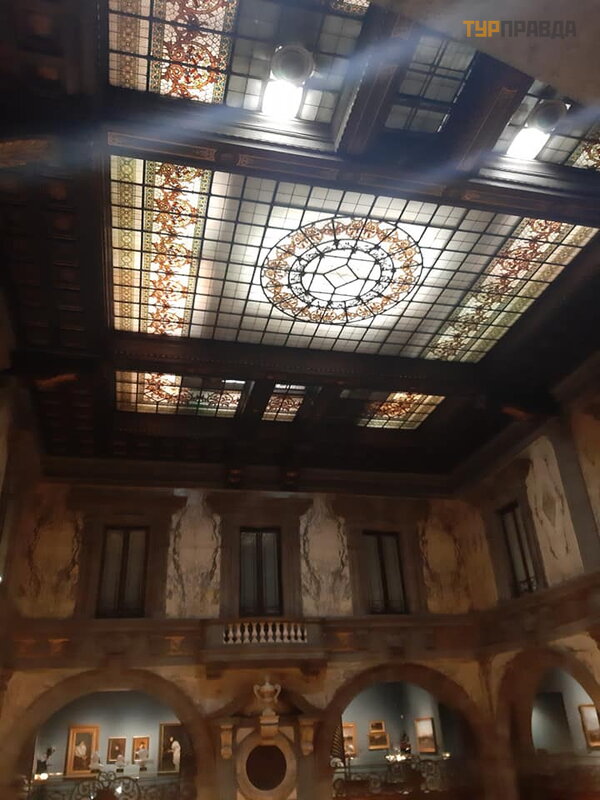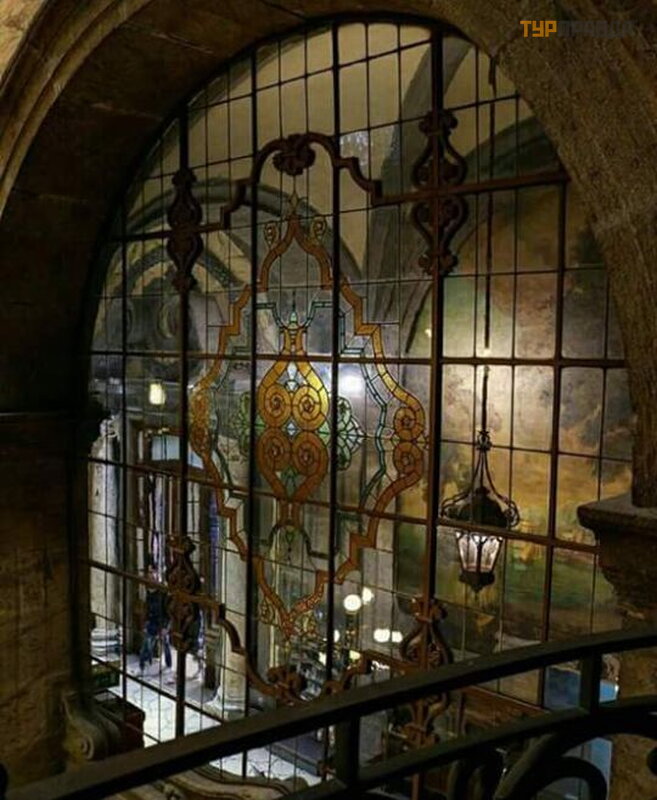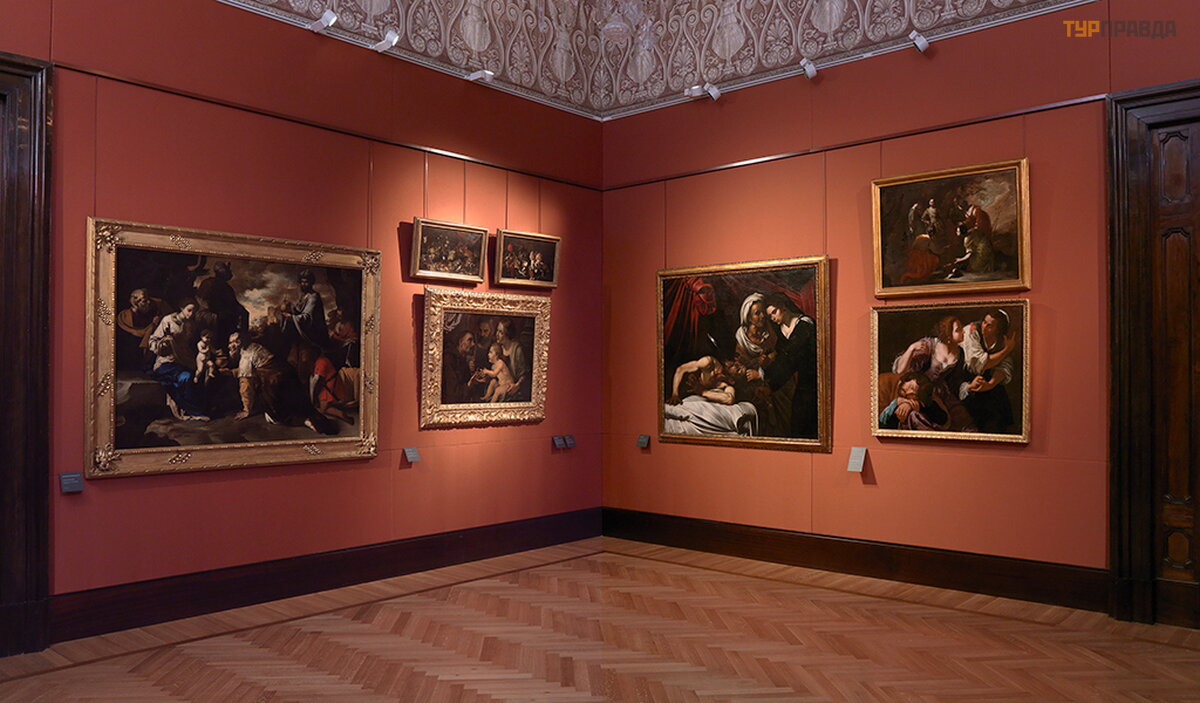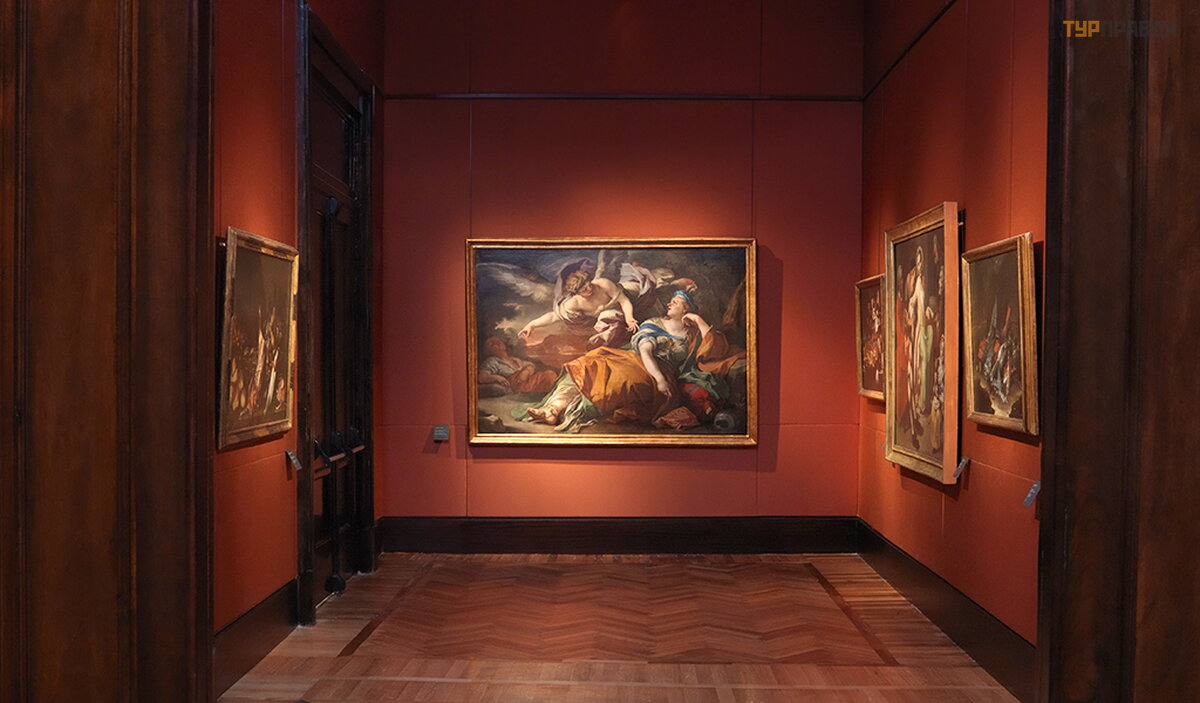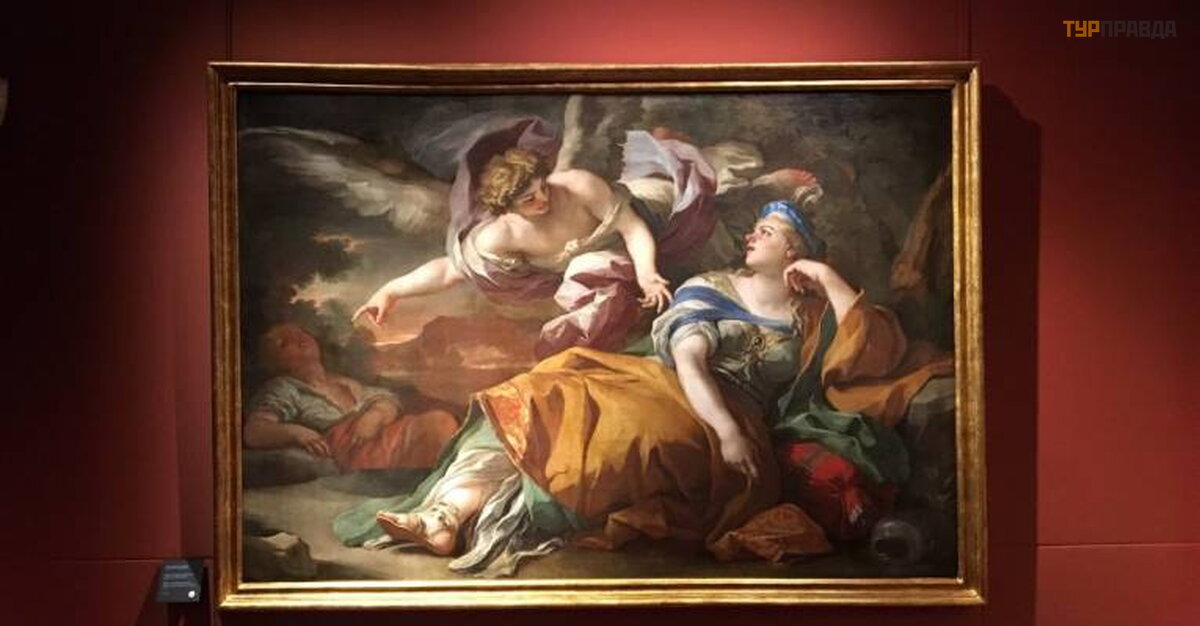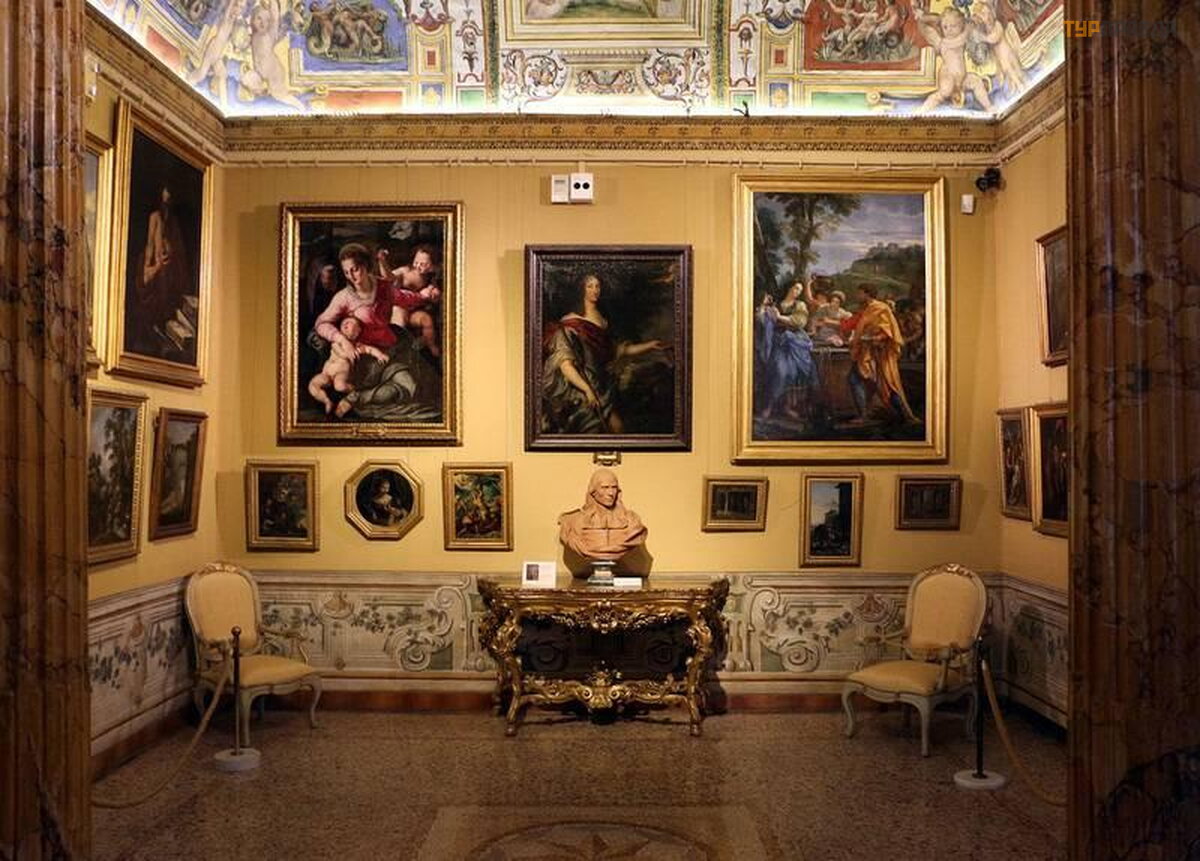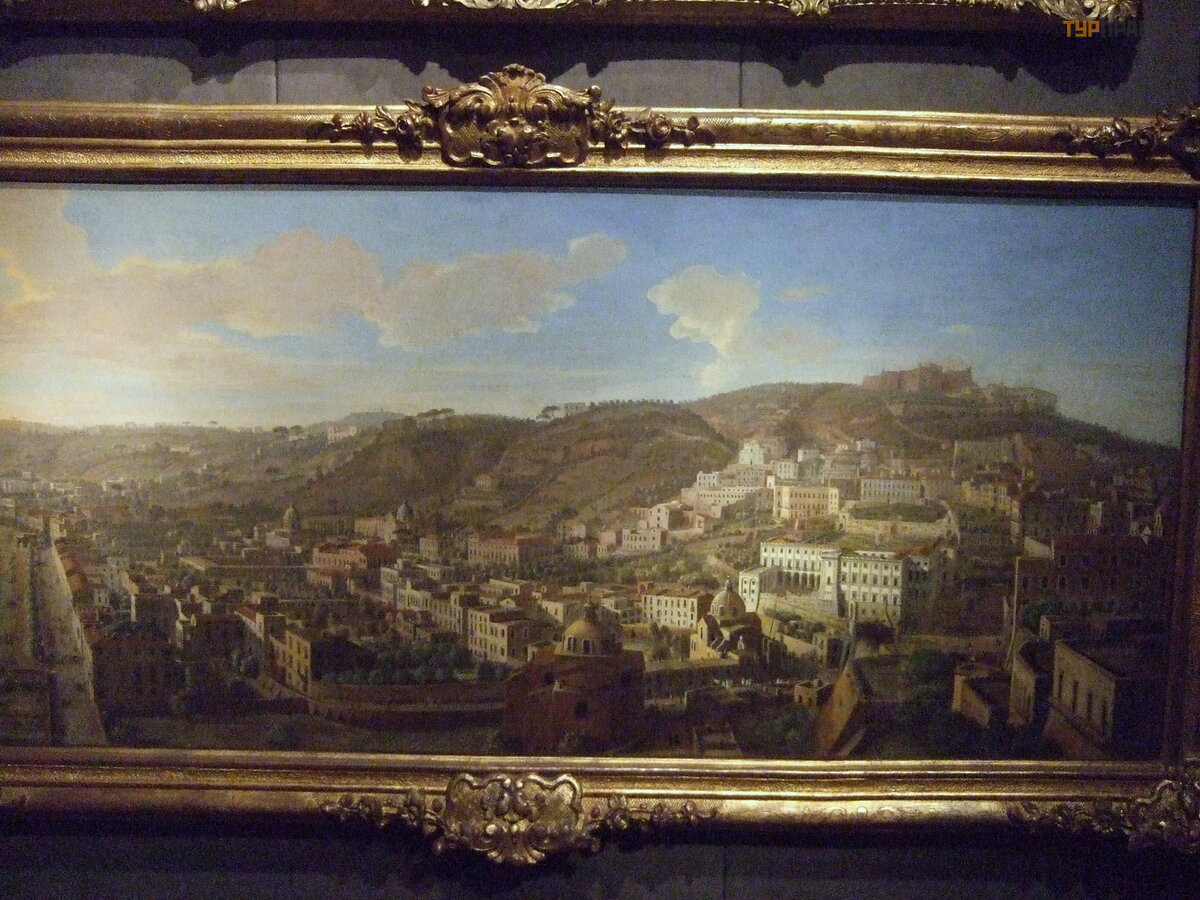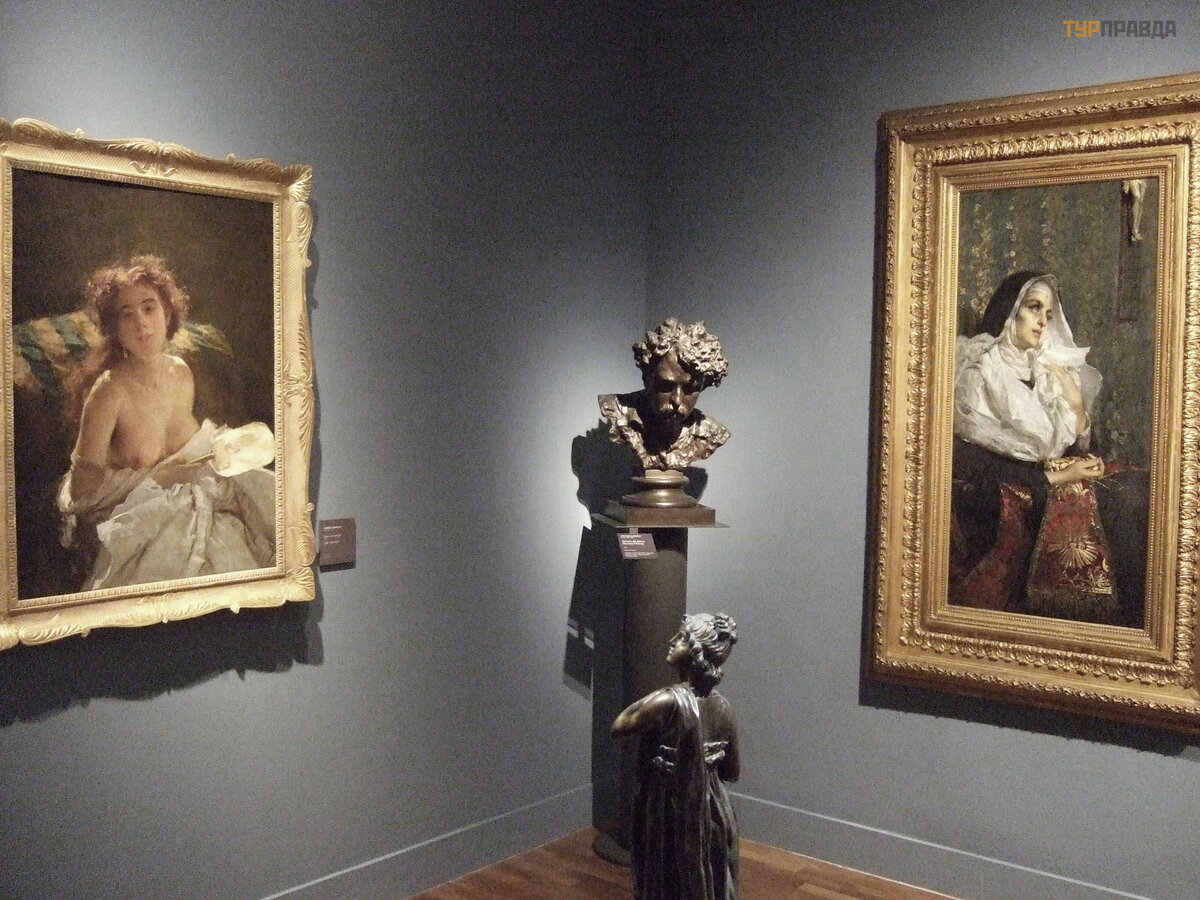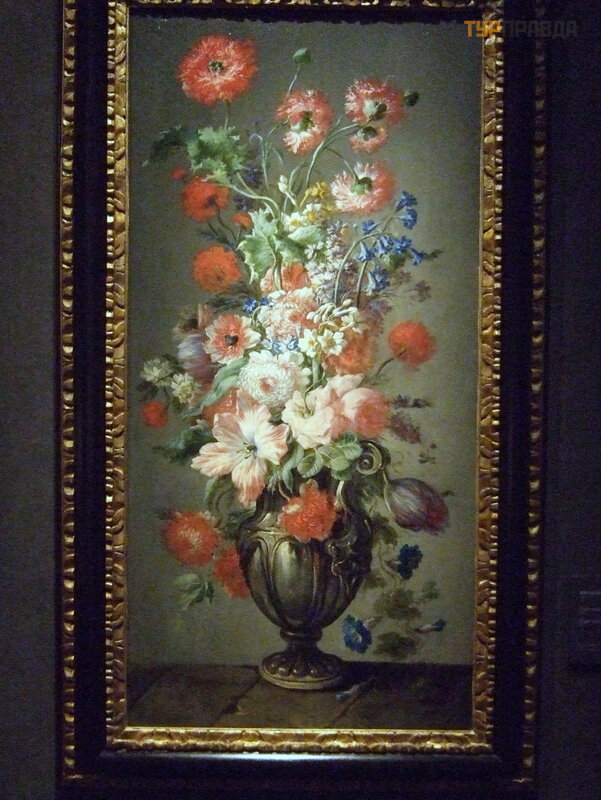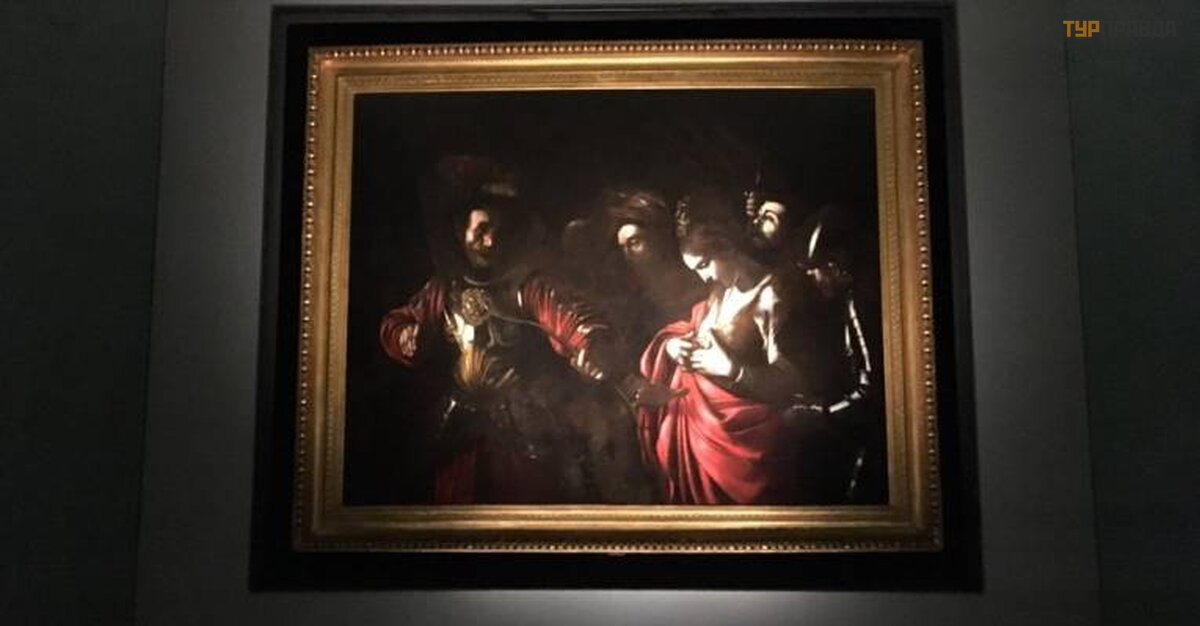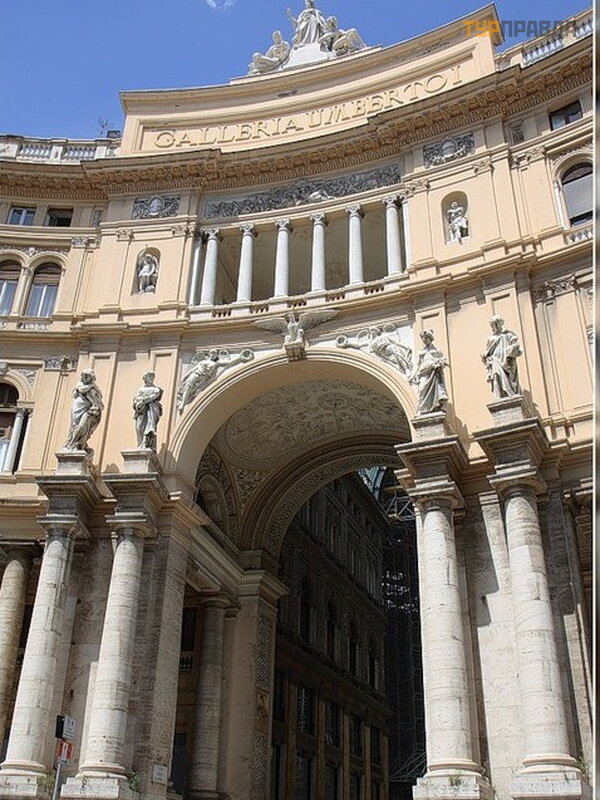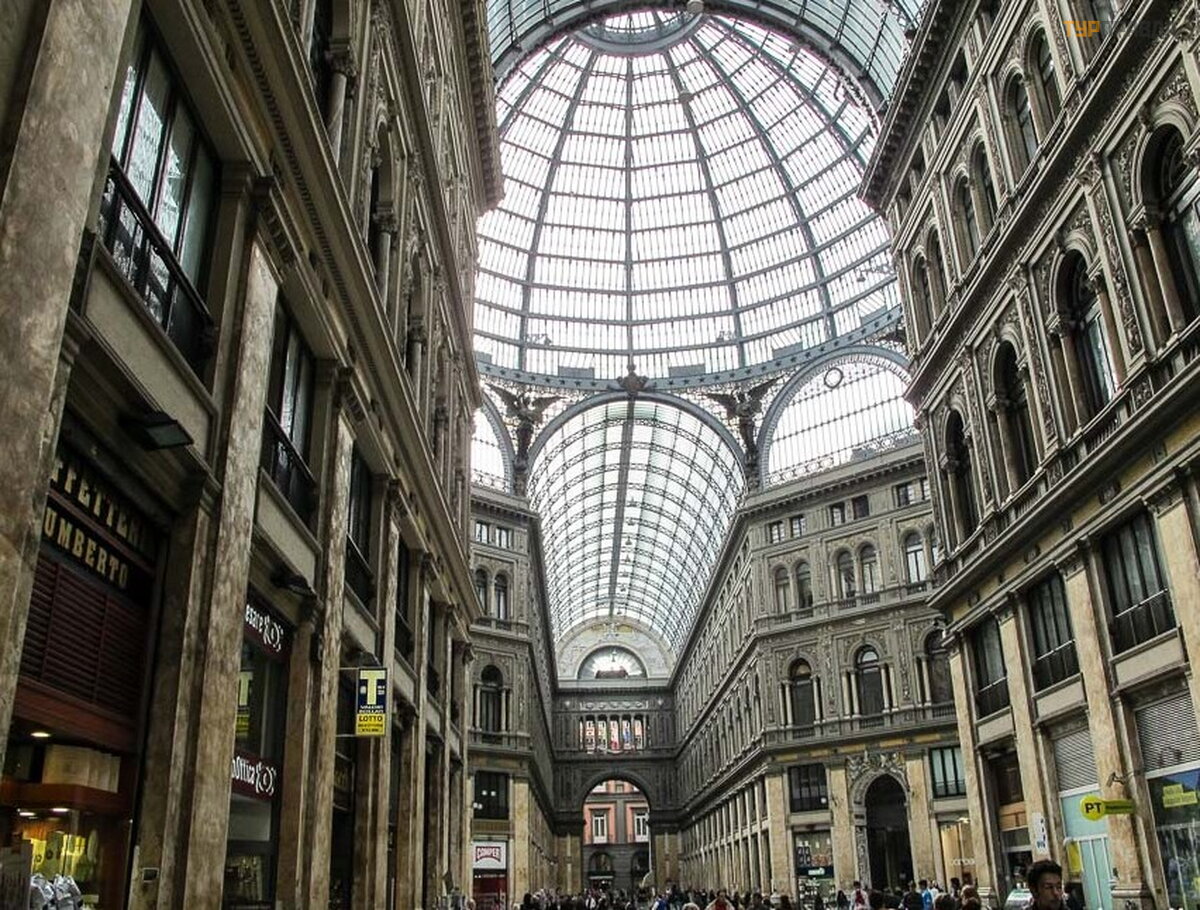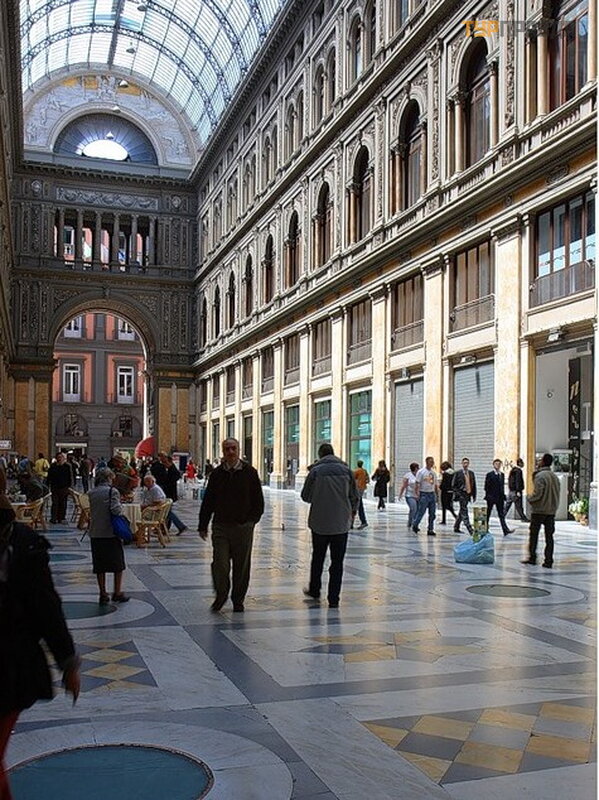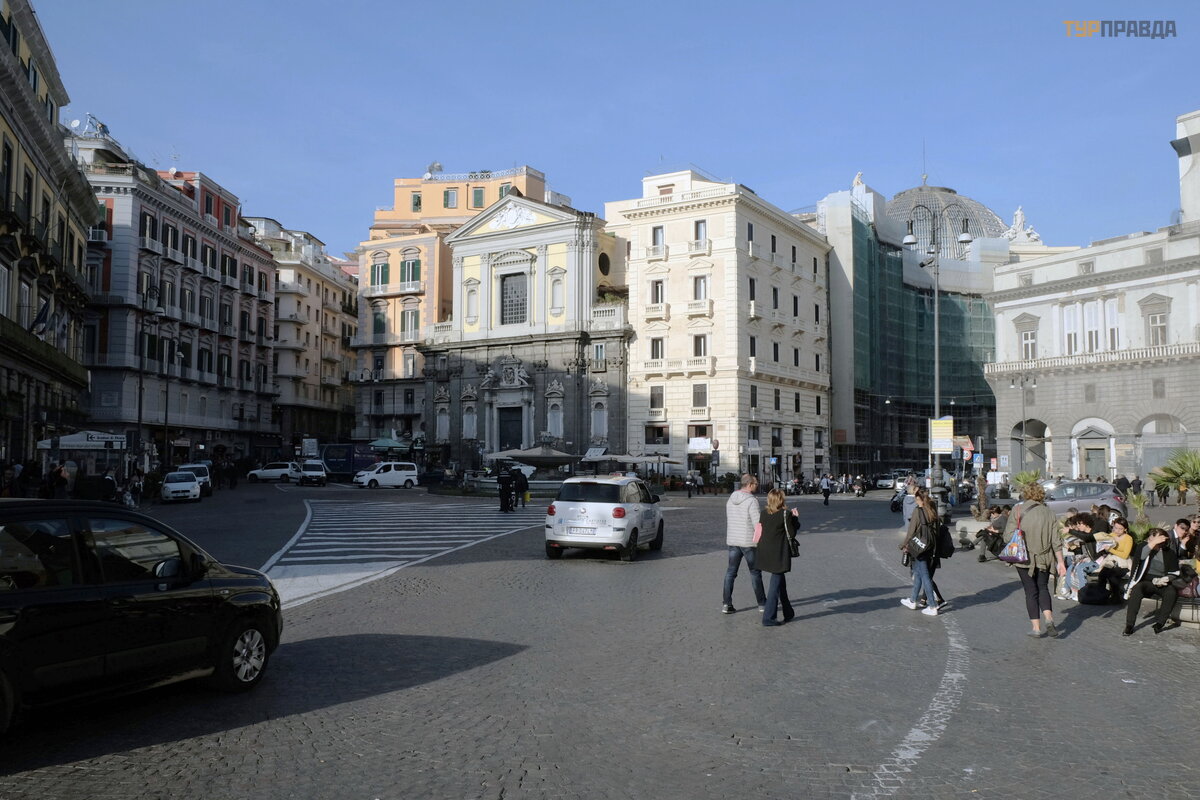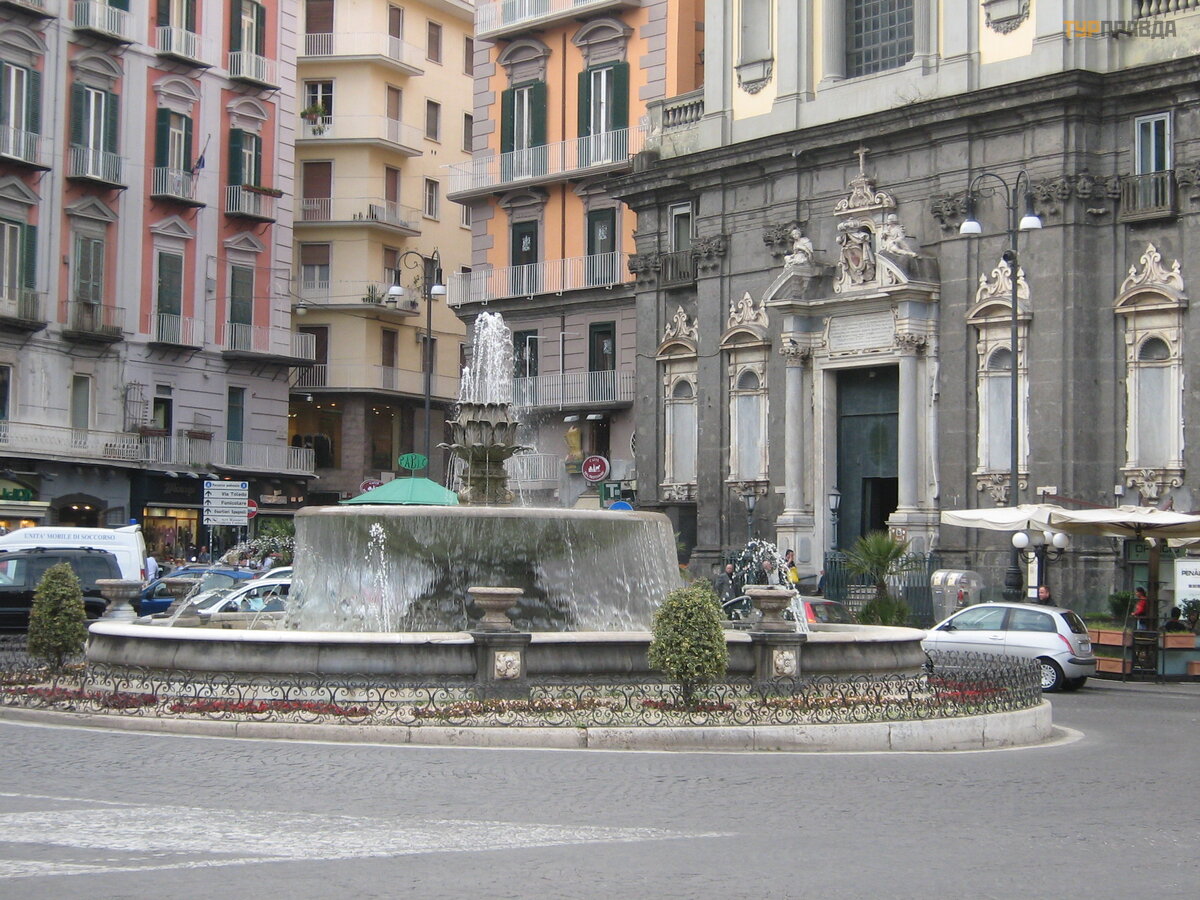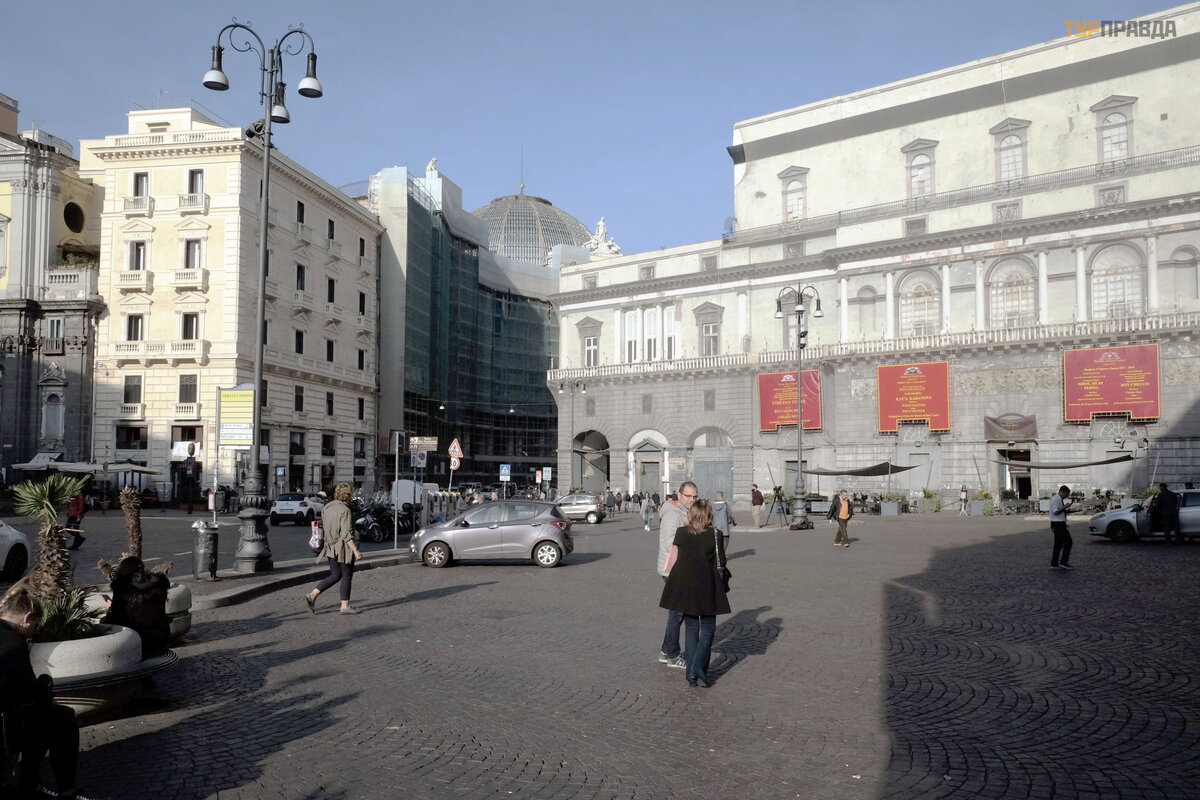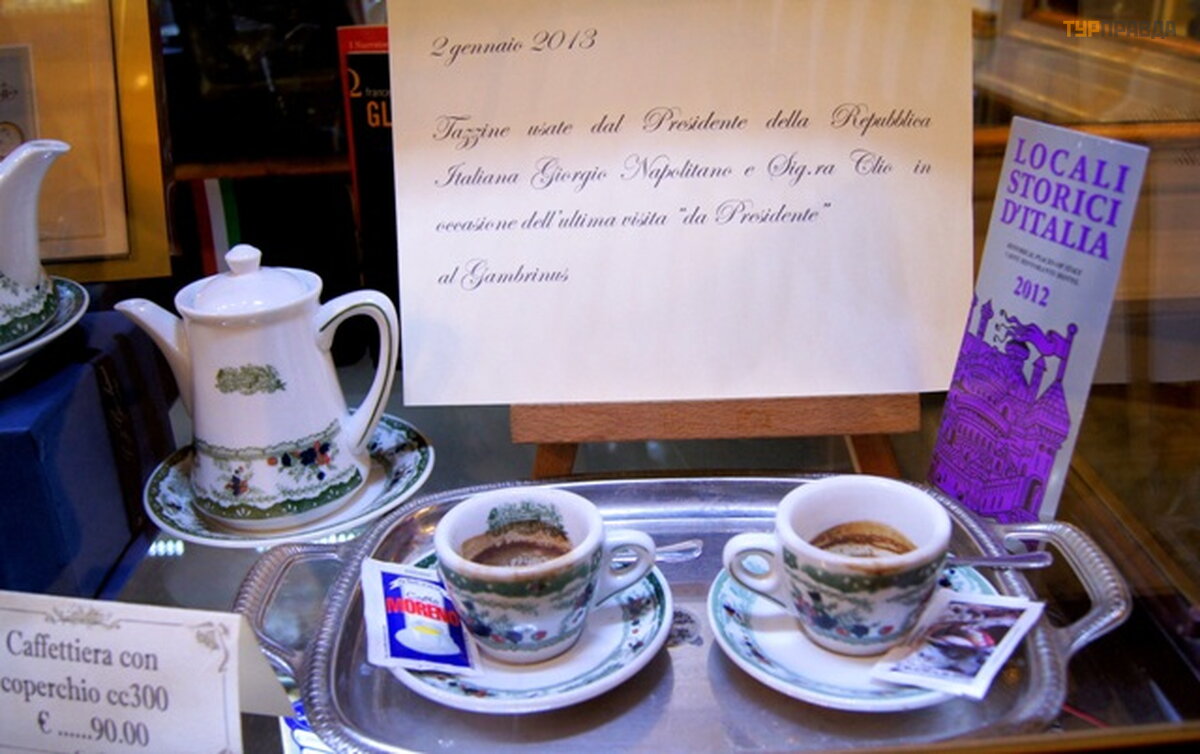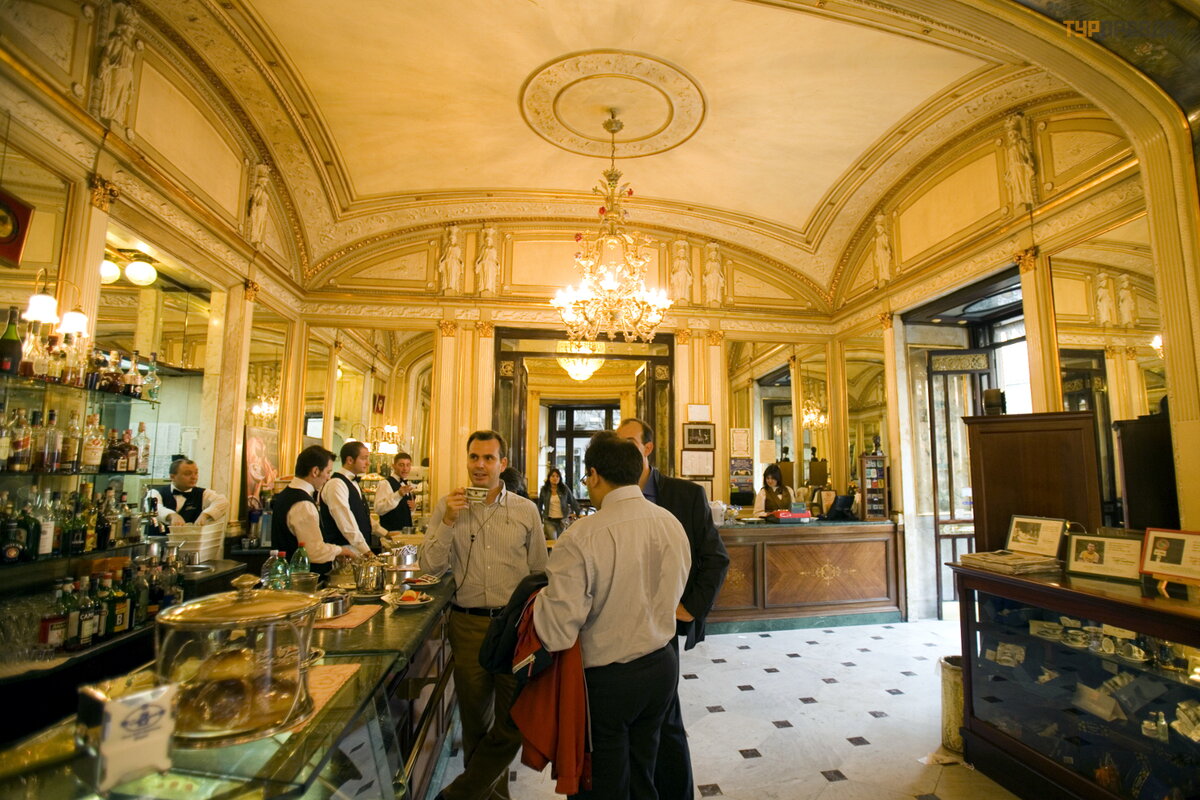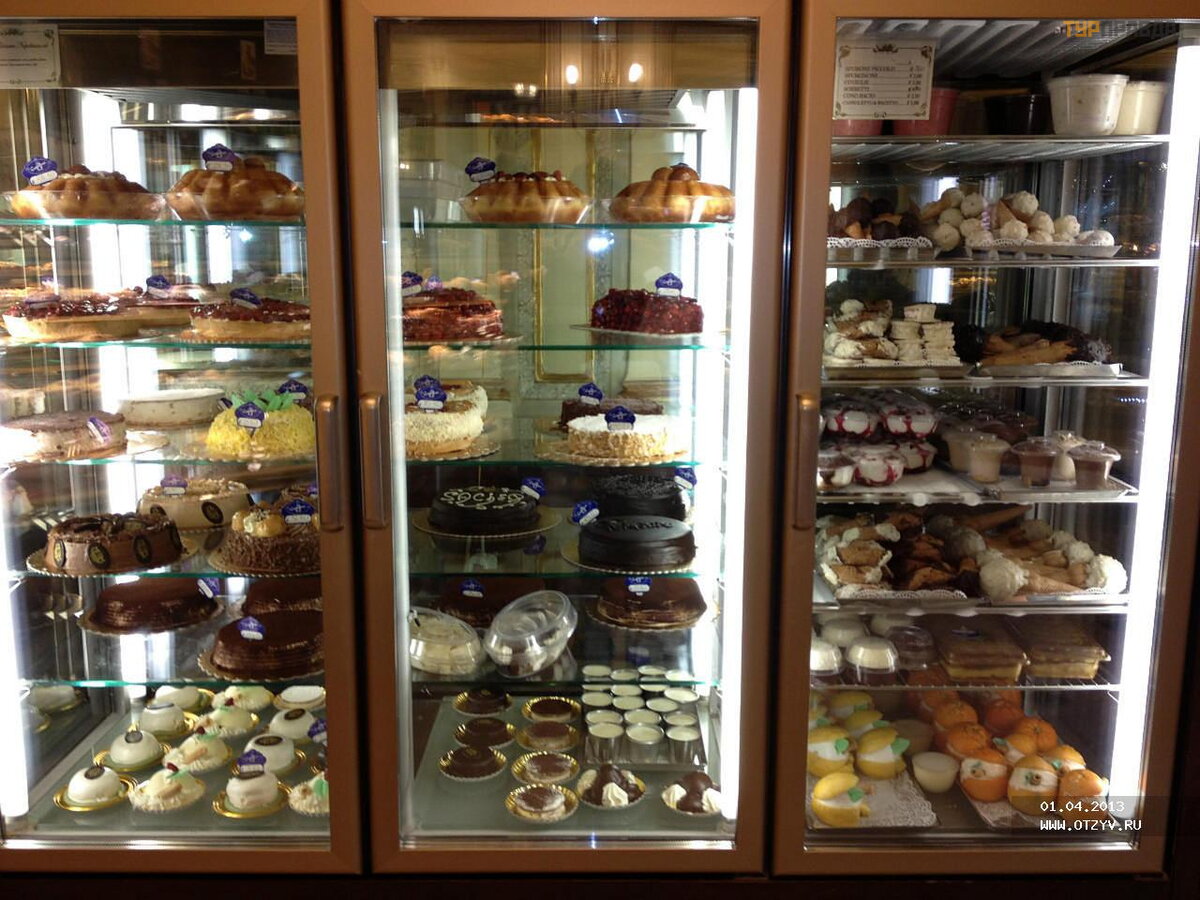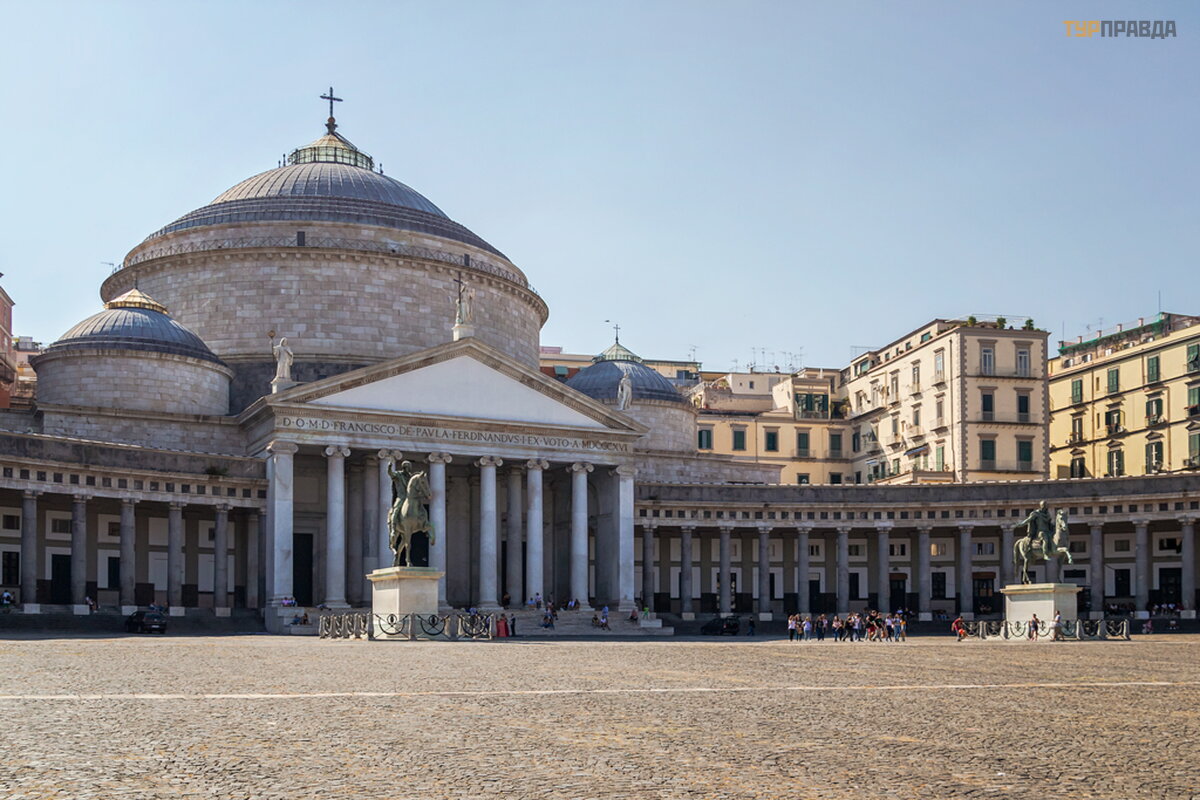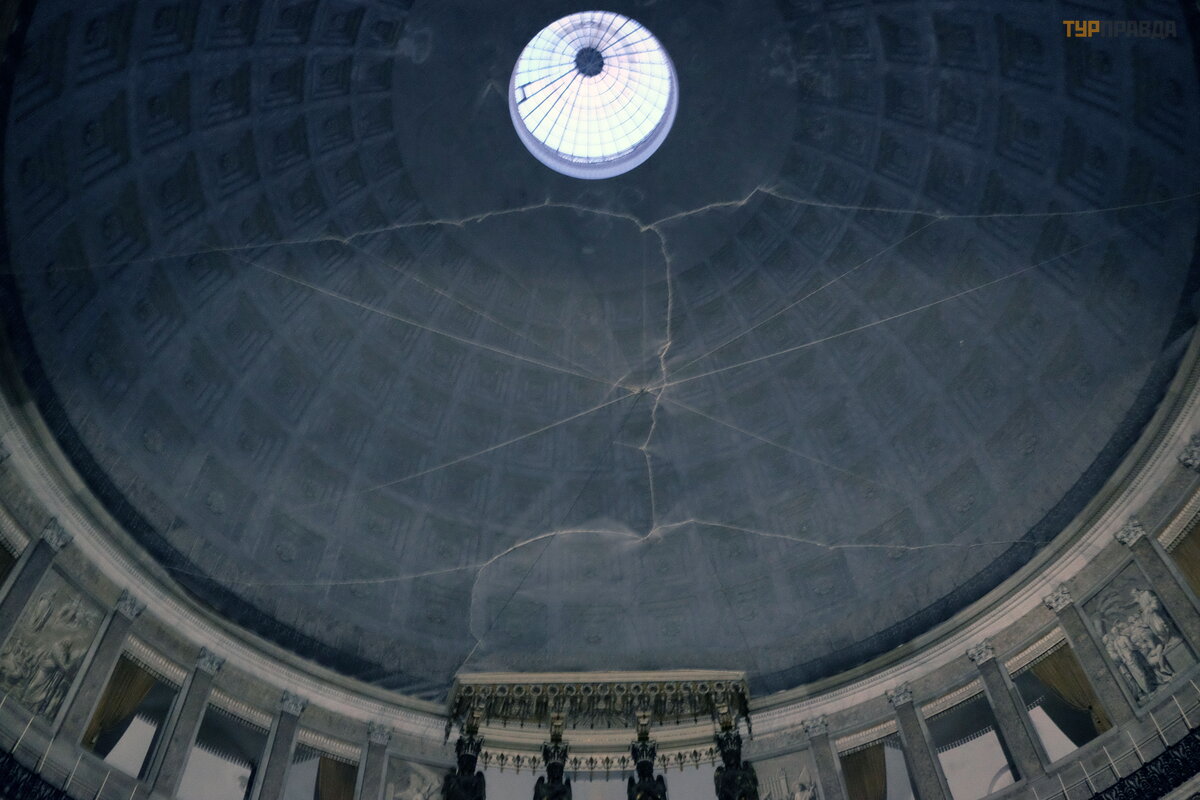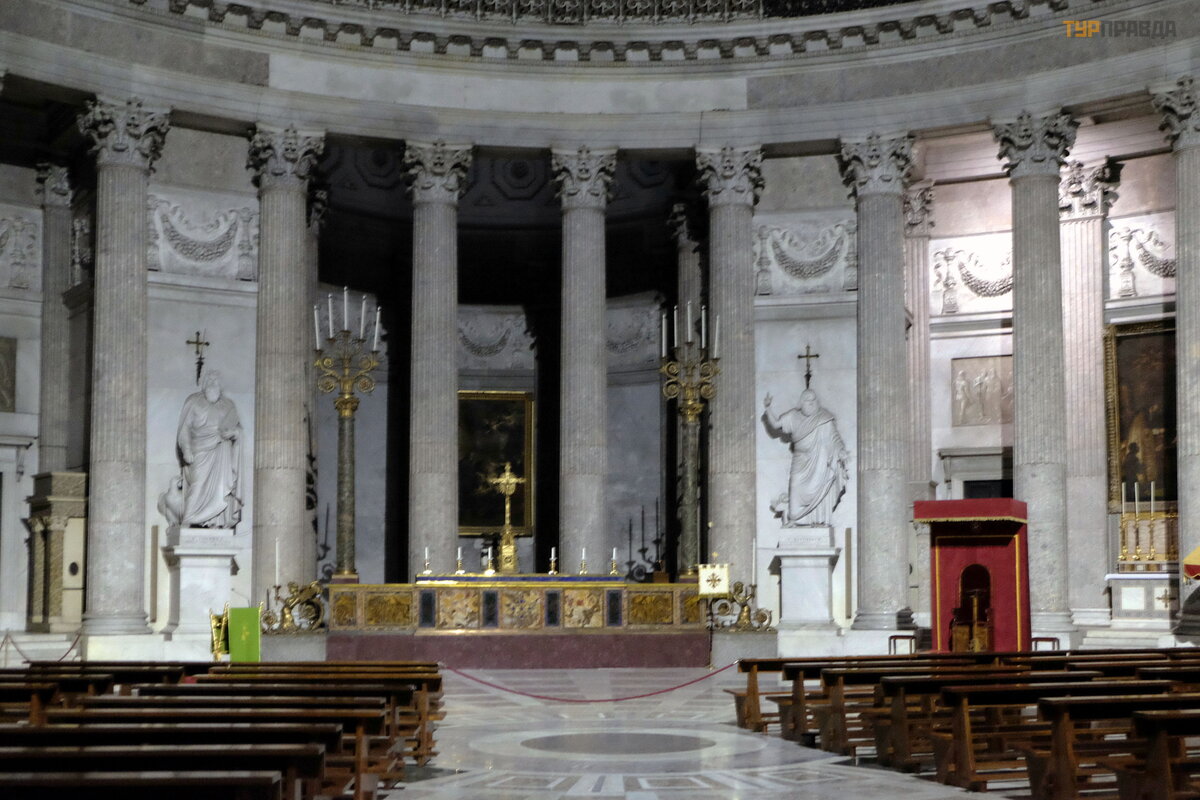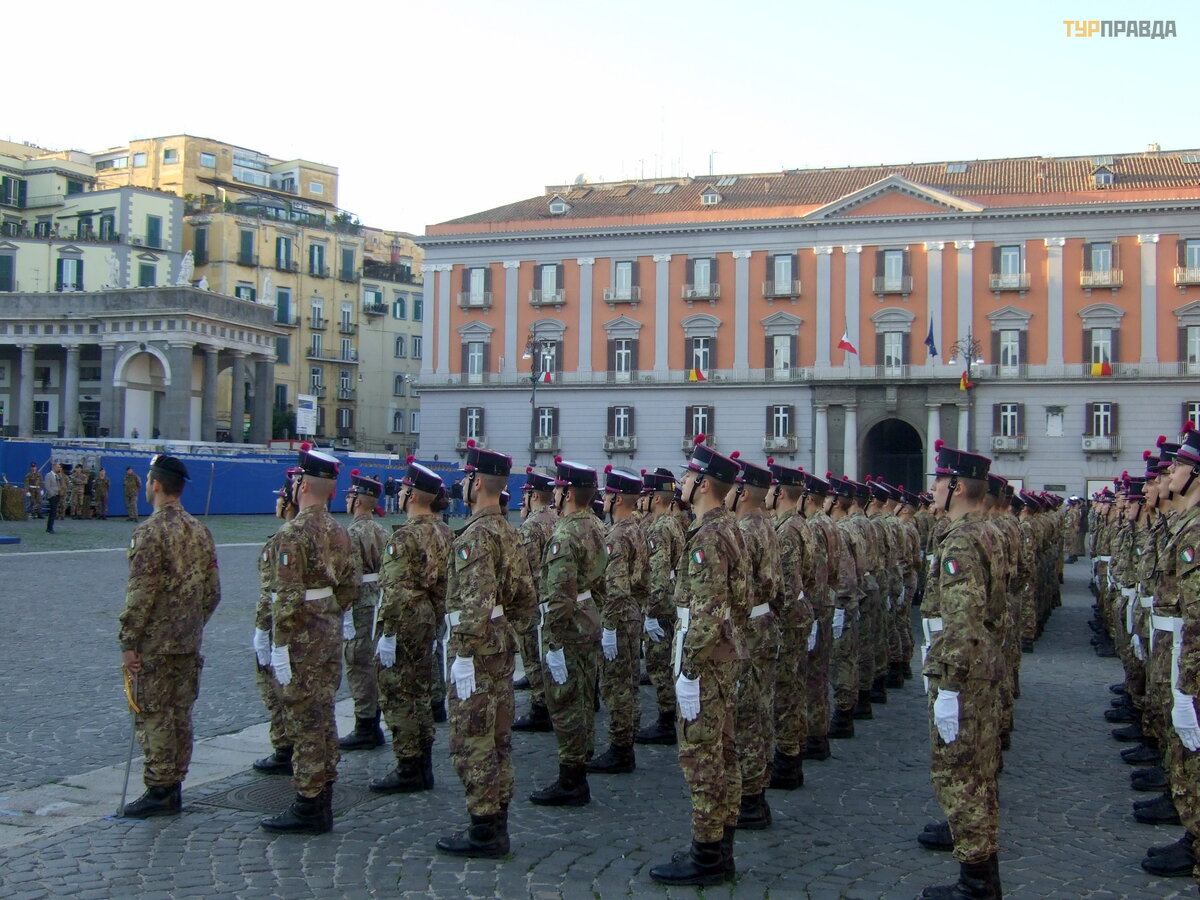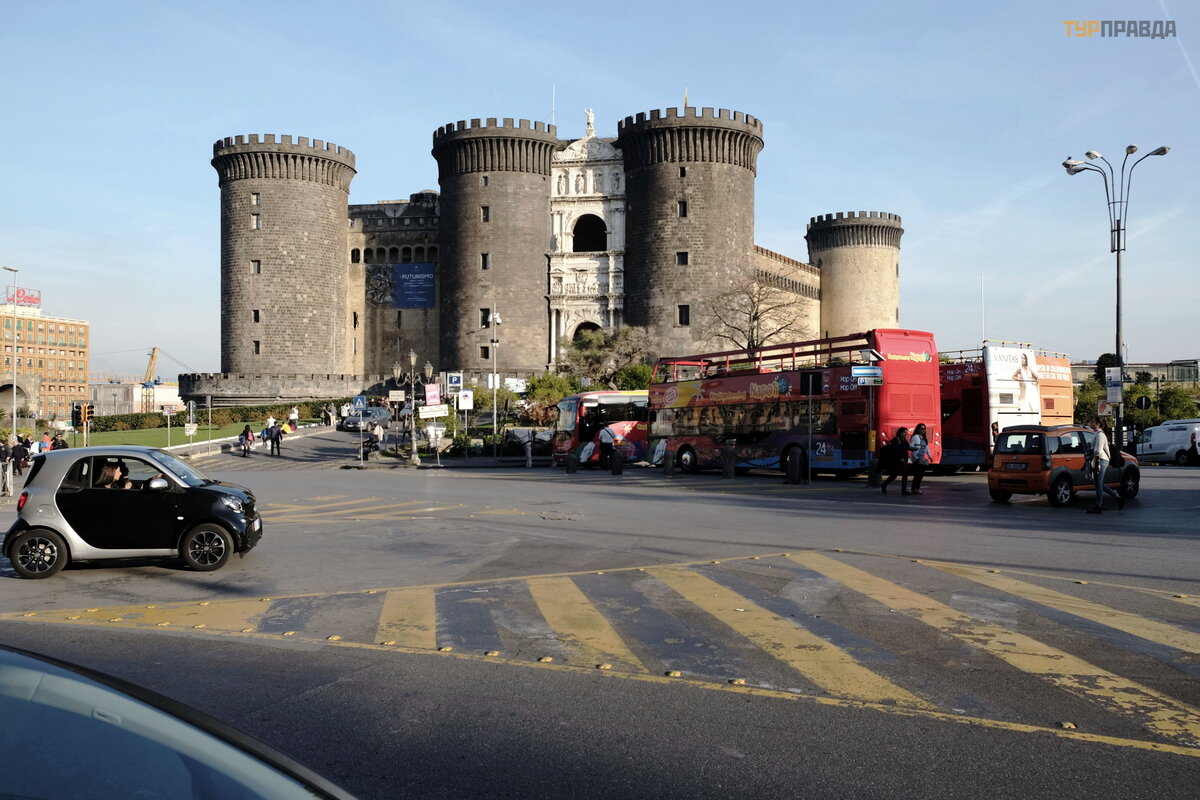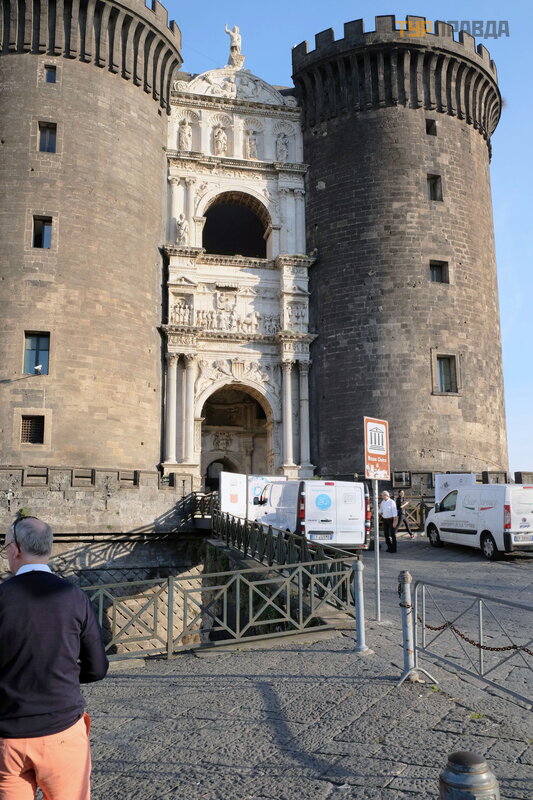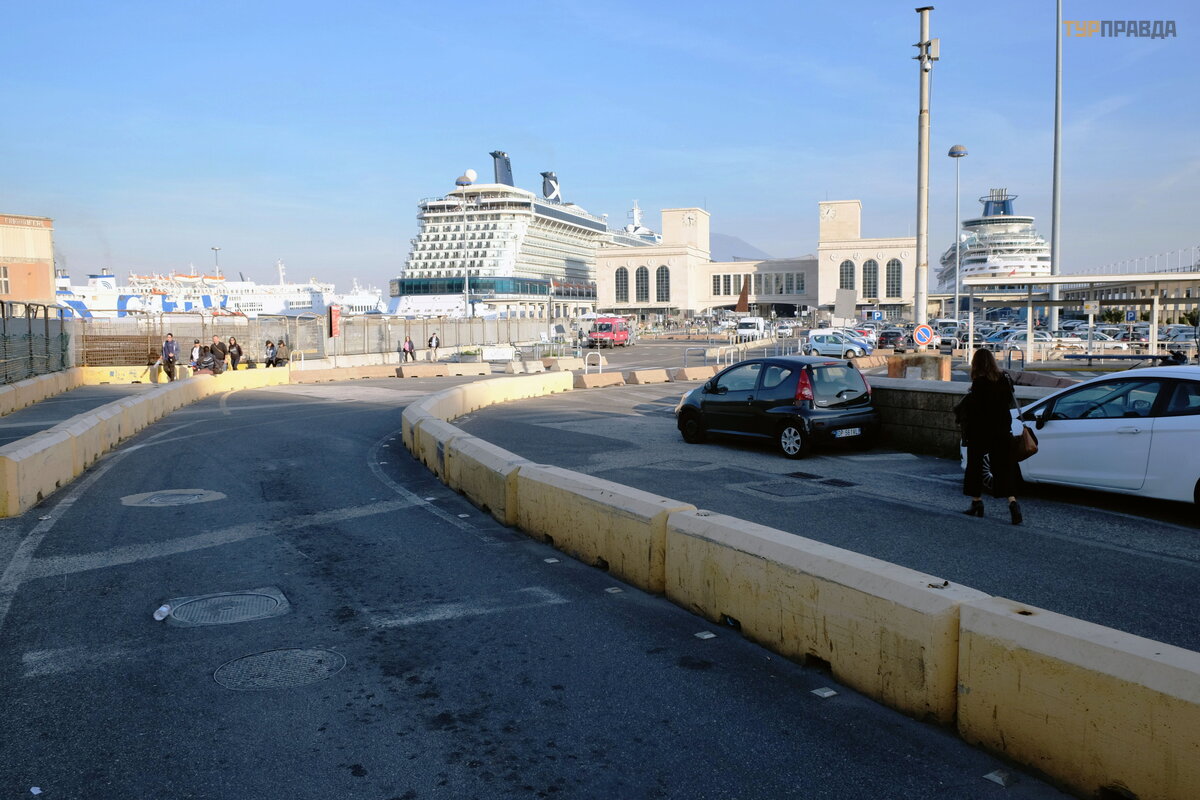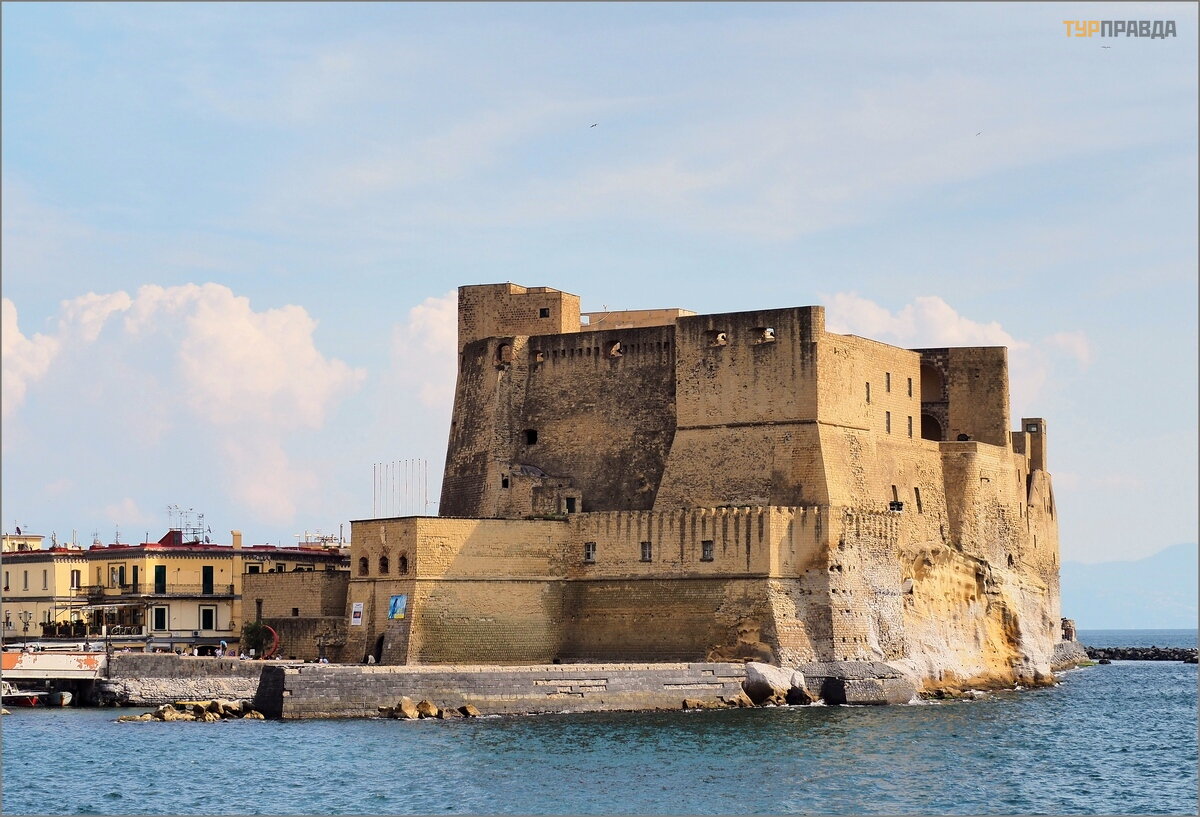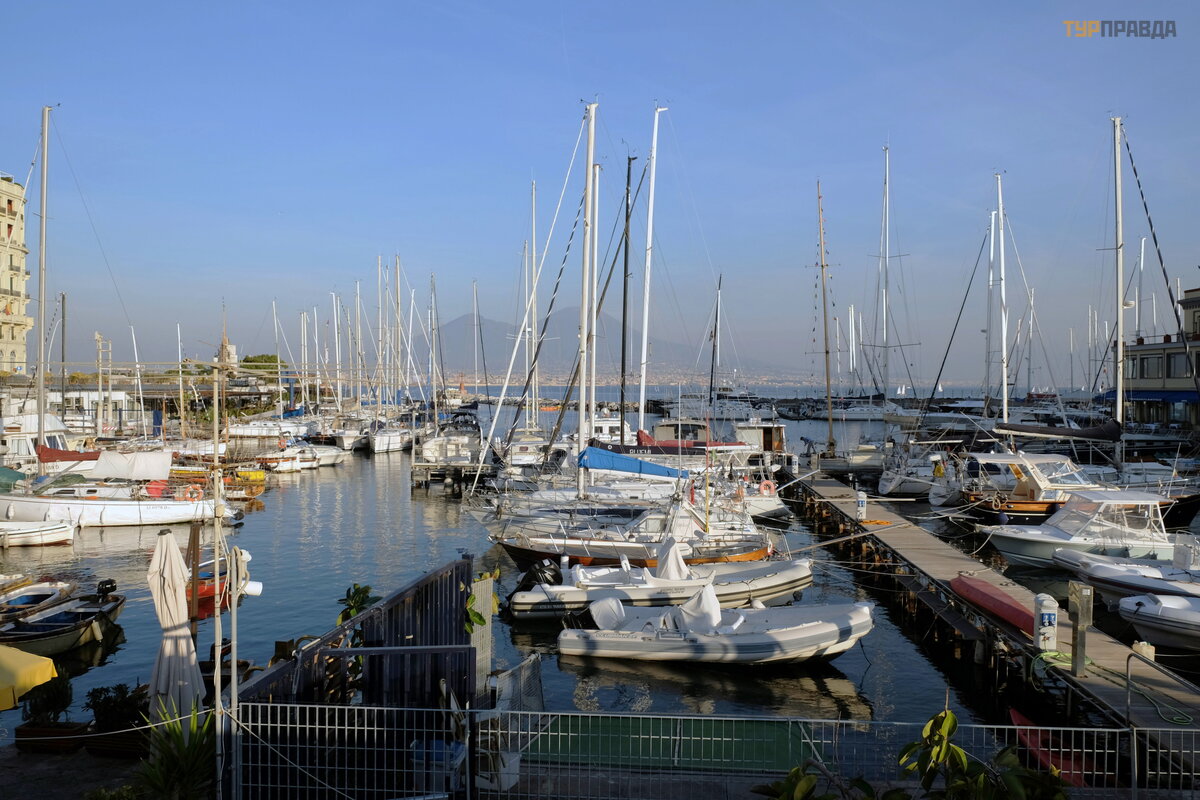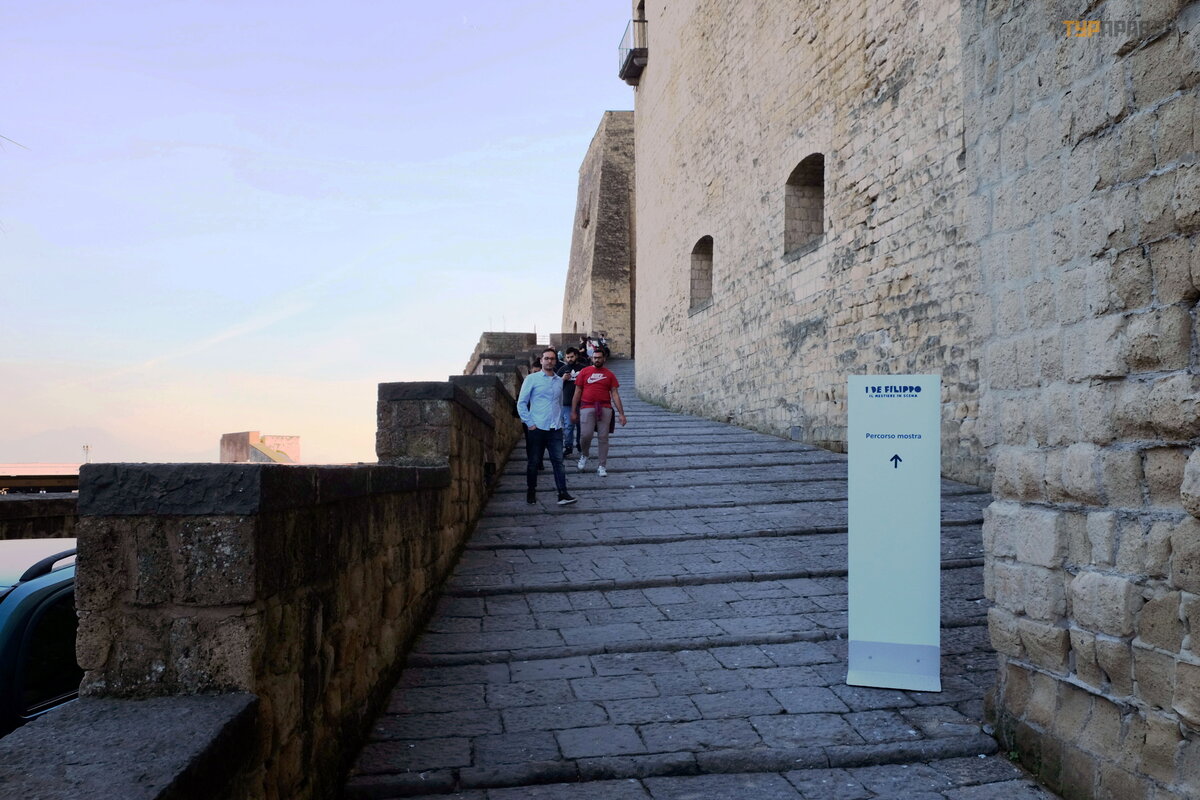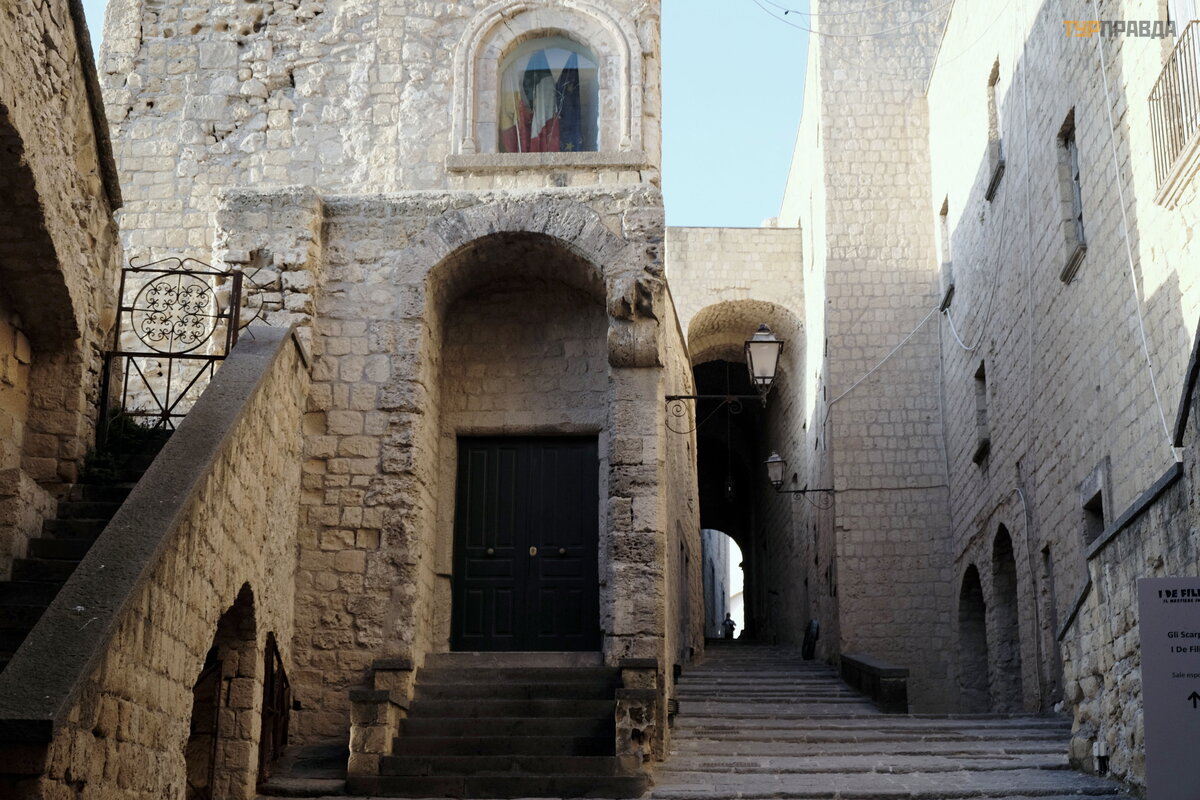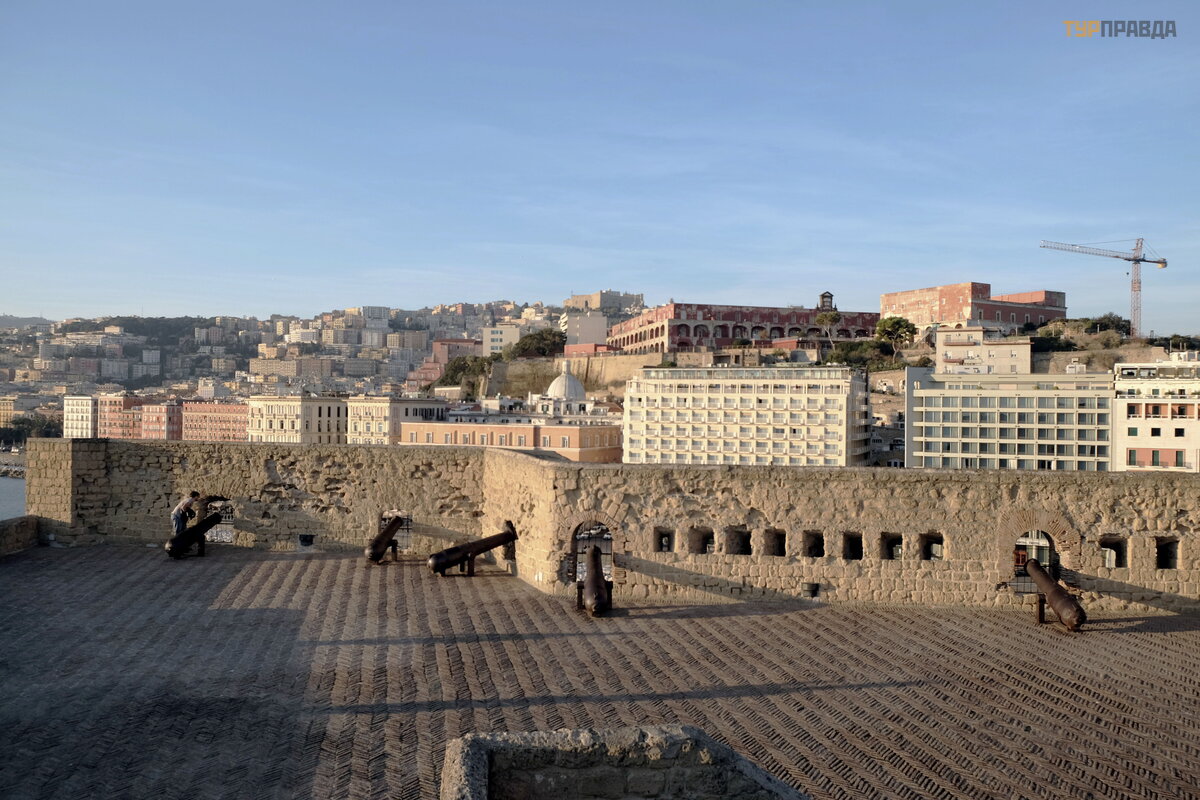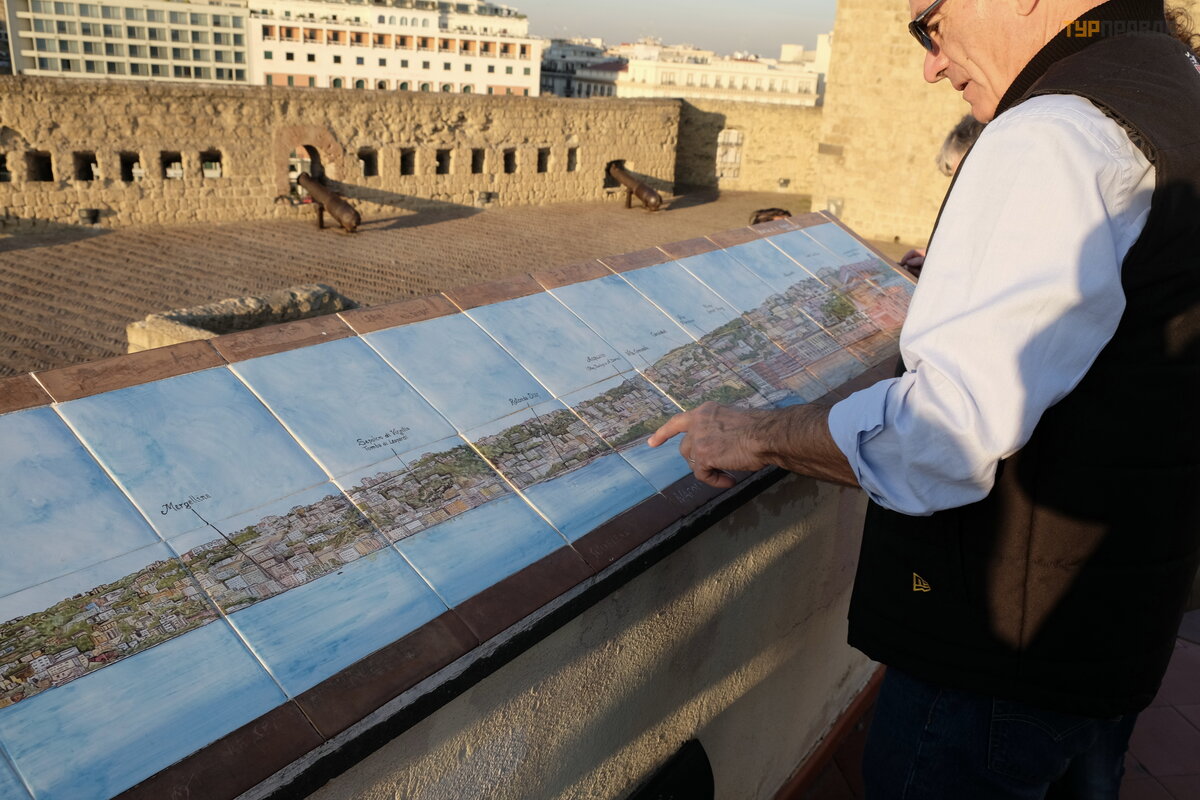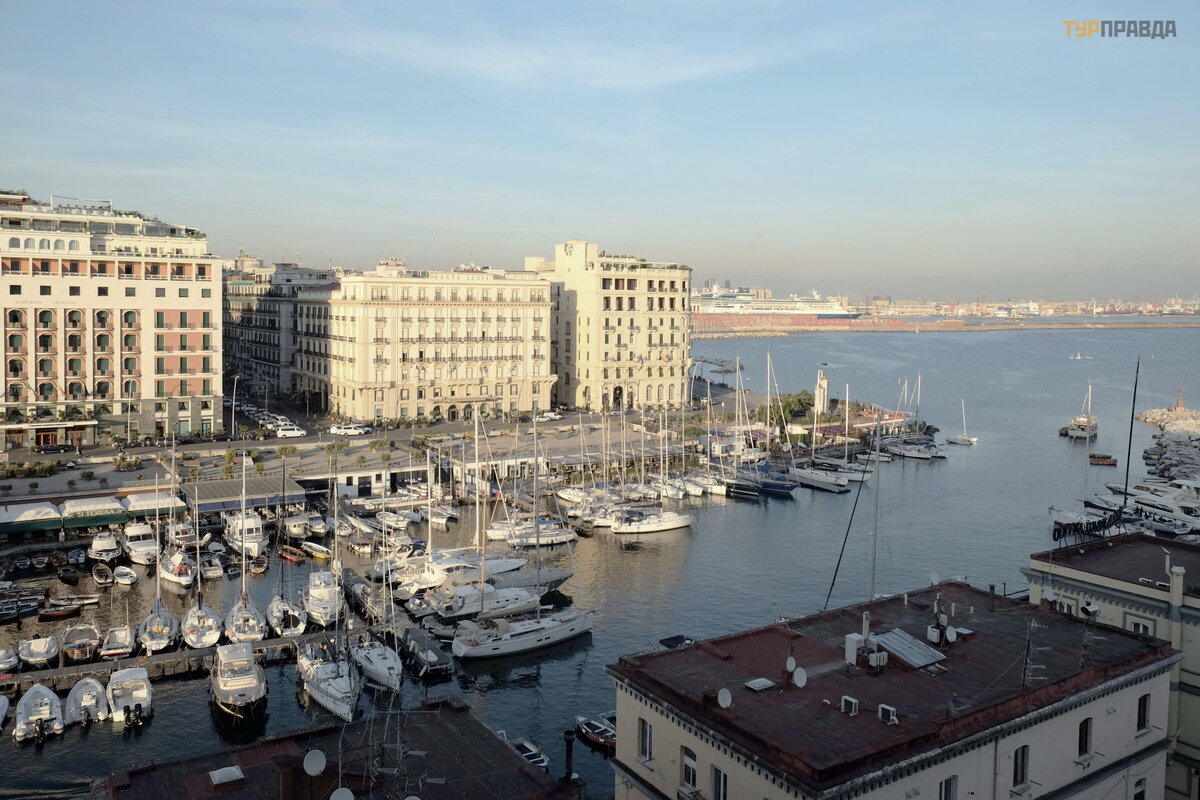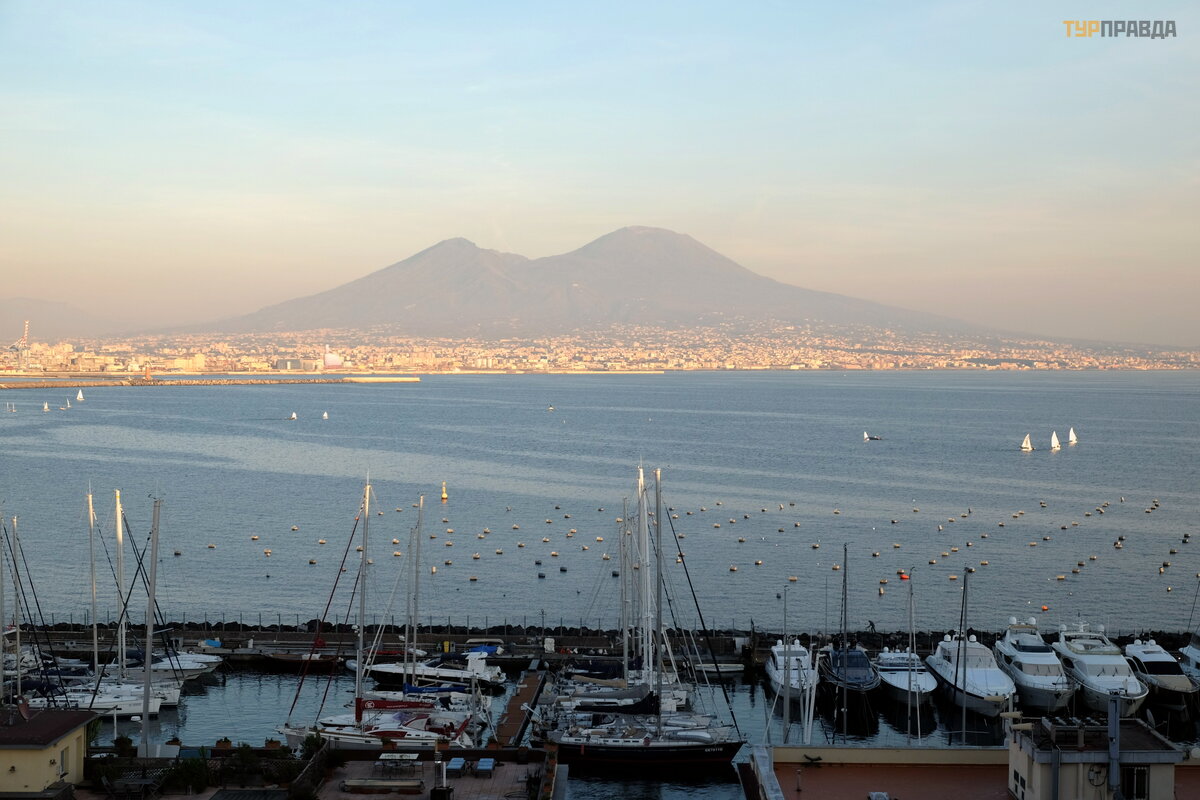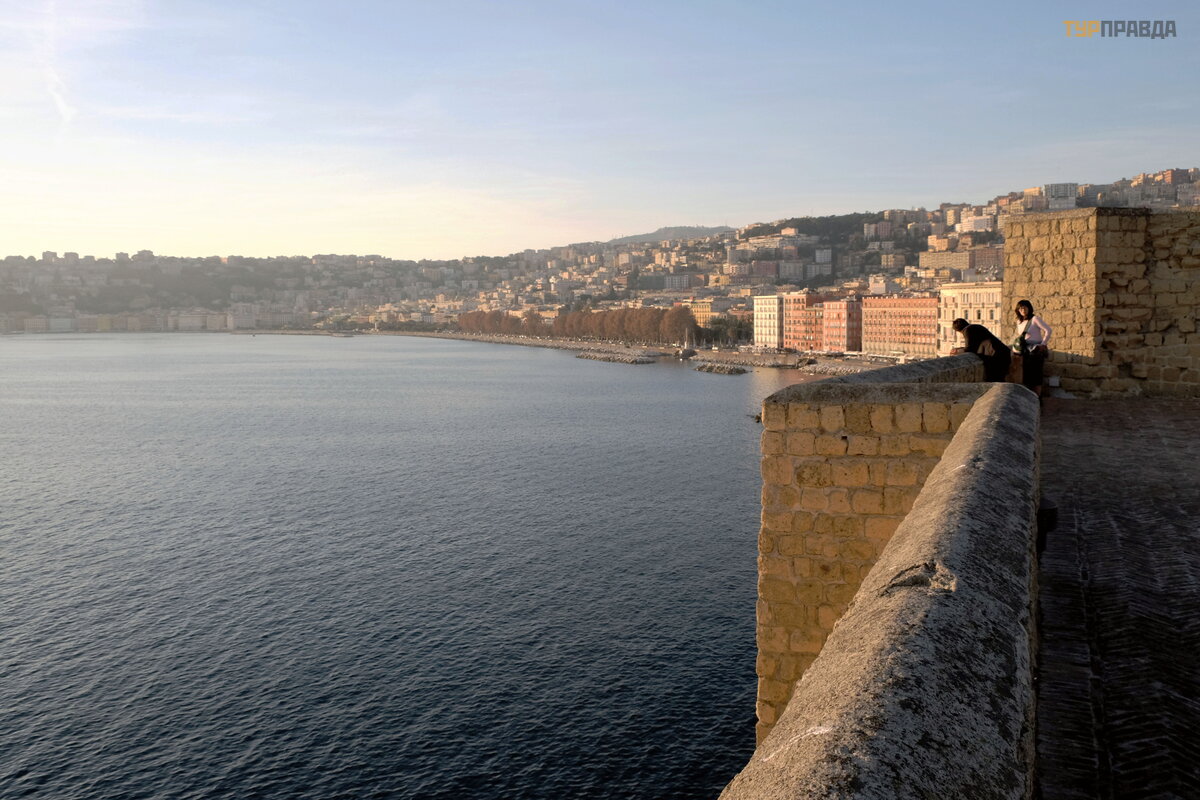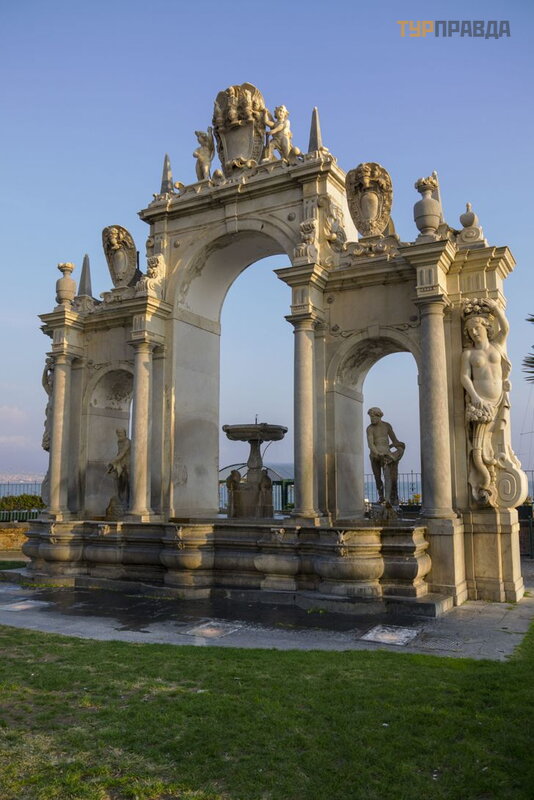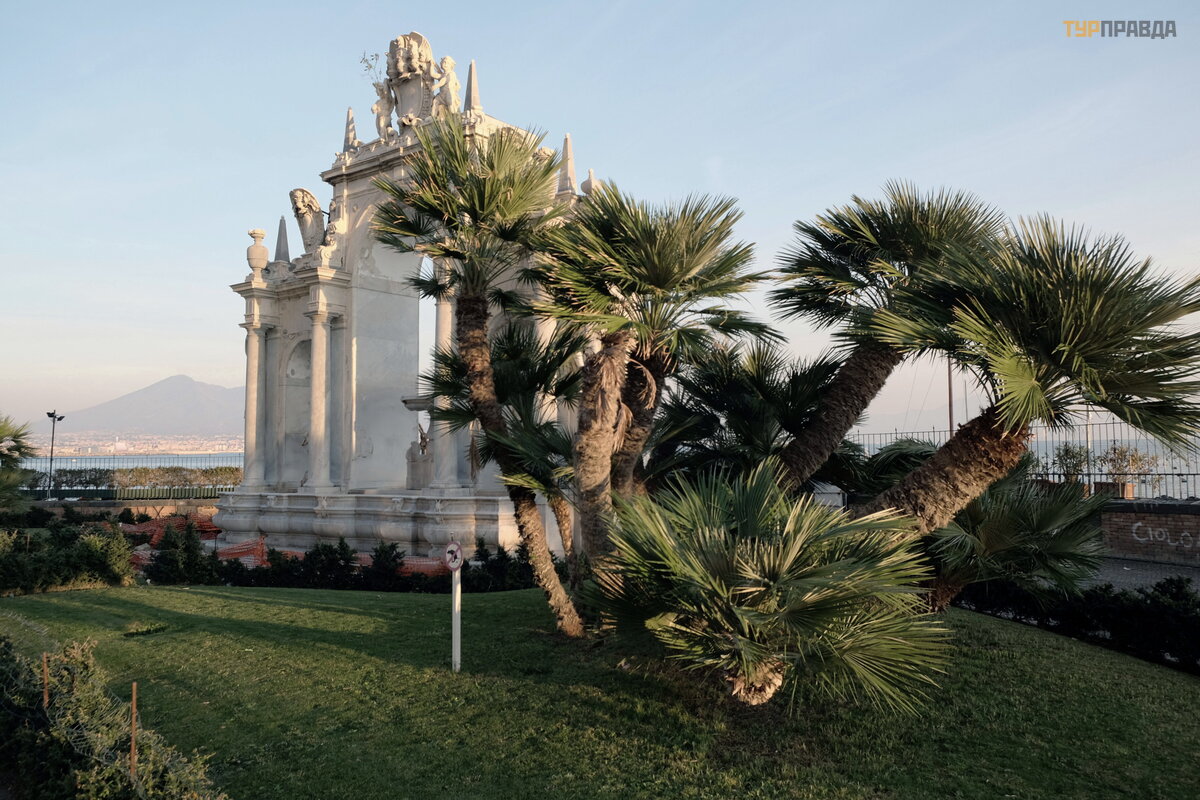My beautiful Naples. Part 5 (continued)

After a few hours spent in the Archaeological Museum, we went for a leisurely walk in the direction of Piazza Dante.
On which stands a monument to the great poet
From Dante, the busiest pedestrian street in Naples, Via Toledo (named after Viceroy Pedro di Toledo) begins, with a large number of shops and outlets
Streets of the Spanish Quarter go up to the mountain
One of the buildings on Via Toledo is the magnificent Palazzo Zevalos, built in 1639 by the architect Fandzago for the Zevalos family.
Now this building belongs to the Banca Intesa, which has a good collection of paintings from the 17th-19th centuries, and the last masterpiece of Carravaggio, The Martyrdom of Saint Ursula.
You can enter the bank building and admire the interior decoration,
Entrance to the gallery - 5 euros, we have a discount on the Artcard - 3 euros. The collection is located on several halls on the floor, the artists are very worthy: Giordano, Gentileschi, Cavallino, de Mura, Solimena, Recco, the Dutch Vanvinteli (father of the famous architect, van Pitloo.
Carravaggio in a separate room on the third floor, under the supervision of a guard
After the gallery, we descended Via Toledo past the Galleria Umberto, a magnificent building of the late 19th century (architect Boubet), reminiscent of a similar building in Milan.
Then we went to the lively Piazza Trieste e Trento, where the baroque church of St. Ferdinant of the 17th century is located, the architect is the same Fandzago (author of the Palazzo Zevalos). The church was closed for a siesta.
In the center of the square there is a triangular lawn and the popular "Artichoke" fountain, from the top of its metal sculpture a small jet of water is obtained, reminiscent of the shape of an artichoke. Fountain of the 50s of the last century.
Next to the famous Opera and Ballet San Carlo. The building (architect Medrano) was inaugurated on November 4.1737, on the day of the king's name day, i. e. on the feast of St. Charles, after whom the theater was named. In 1816, the theater was restored after a fire in just six months by the Florentine Niccolini, who made a new project for the facade. The theater impresses with its luxurious interior, and many experts consider the acoustics to be the best in the world. Unfortunately, now part of the facade is under repair.
On the other side of the square is the famous cafe Gambrinus, which has been operating since 1860. Who was not there: Stendhal and Rossini, Oscar Wilde and Hemingway, Modigliani and Jean-Paul Sartre, Princess Sissi, and even Pope John Paul II, passing by, blessed the cafe. And these unwashed cups are on display after visiting the President of Italy with his wife.
The cafe has a large selection of ice cream and sweets (although there are pastry shops and half a dozen in Neapoli). Here you can have a bite to eat, good food, though the price tag is high. but for coffee it is the same as everywhere else, only the difference in price is where you drink it: at the counter or sitting at a table. However, it is worth coming here for the sake of the interior.
After drinking coffee, we went to Plebeshito (Referendum) Square, where organized tourist groups usually lead. The square received its current name after the unification of Italy, since the plebiscite held in 1860 gave a formal basis for including the lands of the former kingdom of the Two Sicilies into the new country. The idea of the square belonged to the Neapolitan king Joachim Murat, who decided at the beginning of the 19th century. to create, on a truly Napoleonic scale, Murat's forum. However, the square was completed with the Basilica of San Francesco di Paola (architect P. Bianchini; 1817-46), erected by Ferdinand I of Bourbon in gratitude to Heaven for delivering the kingdom from the usurper, and Murat was shot in the autumn of 1815 after he supported Napoleon after his return from Elba. Now it is a pedestrian zone and a place for various events. There was a rehearsal of some kind of military parade on the square. 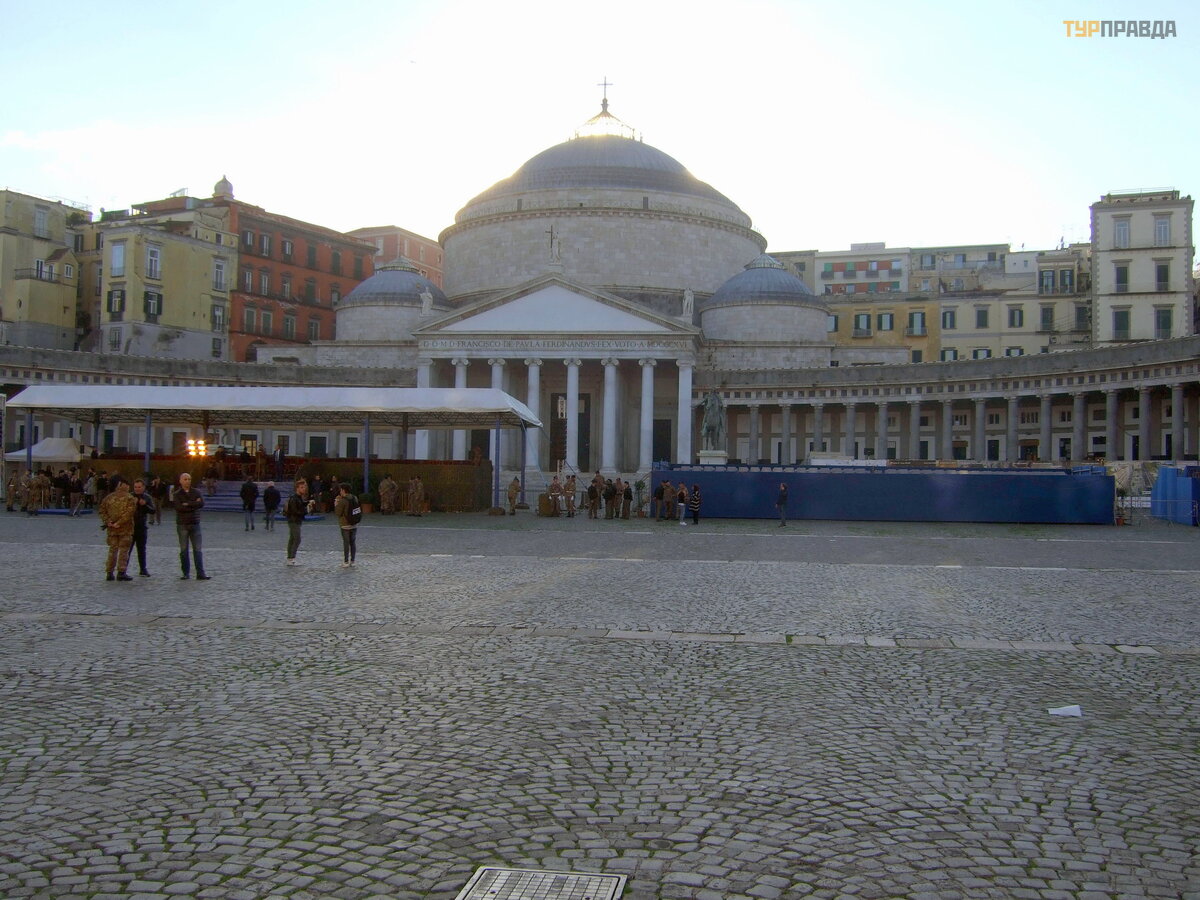
. In the center of the colonnade is the monumental faç ade of the Basilica of San Francesco di Paolo, and two equestrian monuments are erected in front of its wings - Charles III of Bourbon by Antonio Canova and Ferdinand I (sculptor Antonio Cali). Now they are closed by the stands, so I'm posting last year's photo
The temple itself is a strange hybrid of the Pantheon and St. Peter's Basilica with Bernini's colonnade. We then went to the church, inside it also repeats the Pantheon.
The dome is covered with mesh.
The Royal Palace (Palazzo Reale) fronts on the other side of the square. Work on its construction began in the 1600s. Domenico Fontana; the customer was the Spanish Viceroy Don Ferrante Ruiz de Castro, who wished to erect a residence worthy of the Spanish crown by the arrival of his overlord, Philip II. At the beginning of the XVIII century. the building was expanded, and after a fire in 1837, it was recreated, with neoclassical elements, by Gaetano Genovese. The extended facade is crowned with a clock and a belfry; in its lower floor by Vanvitelli in the 18th century. arranged eight niches, where, at the behest of Umberto I, in 1888 they erected statues of the rulers of Naples, who had ruled here since 1140 (it is curious that Umberto I also placed a statue of the illegitimate monarch Murat near the palace - as a tribute to his progressive rule and calls for the unification of Italy) .
We headed towards the embankment past the royal palace. They didn’t visit the palace itself, because. We decided that this time one palace in Caserta would be enough for us. Opposite the eastern wing of the palace with Klodt's horses (a gift from Nicholas I)
We went to a good pizzeria, familiar from last year. Having refreshed, we walked around the Angevin Castle "Castel Nuovo" (built by Charles I of Anjou as the residence of his court in 1279-1282).
The massive citadel with cylindrical towers has a main entrance - the Arc de Triomphe, the rarest example of Renaissance art in Naples.
After going around the castle, we exit to the maritime station, where cruise liners moor and ferries leave for Capri and Ischia. The maritime station was built in Naples in 1936 - shortly before World War II by the architect Cesare Bazzani. This is a complex of two completely symmetrical terminals connected by three transverse passages. This structure turned out to be very convenient - soon after the construction of the Naples Marine Station, it turned into one of the largest ports in Europe and remains so even now.
Then we went to see the oldest building in Naples, Castel dell'Ovo (Castel dell'Ovo) "Castle of the Egg", there is a legend that Virgil buried a magical egg here that kept the well-being of the city. The history of the castle dates back to the times of Ancient Rome: here was the villa of Lucullus, famous for his plentiful feasts. In the early Middle Ages, there was a monastic desert here. In 1128, the Varangian prince Roger II built a castle on the island.
They got to the castle in a roundabout way by bus, because There is no direct pedestrian road; the castle separates the hill from the Naval Station, through which in 1927-30. was dug 600-meter tunnel (gallery) della Vittoria (tunnel della Vittoria), an outstanding piece of engineering art, which made it possible to directly connect the eastern and western parts of Naples.
next to the pier with yachts
Entrance to the castle is free
On the upper platform of the cannon, during the war with Napoleon, the castle was shelled more than once.
Next is the plan of the panorama of the city.
Views of Vesuvius and the Marine Station
And this is the view from the other side, to Posilippo Hill
Near the castle there is one of the most famous fountains in Naples, the "Giant" (fontana del Gigante), sculptors Michelangelo Naccherino and Pietro Bernini (father of the great Lorenzo and author of the risky fountain "Barcaccia" - "Boat" at the Spanish Steps). The fountain was created in the 17th century for the royal palace, where it stood next to the figure of a giant, hence the name. The fountain was moved several times from place to place, now it has been standing here since 1906.
This concludes the cultural and entertainment program of the day.
